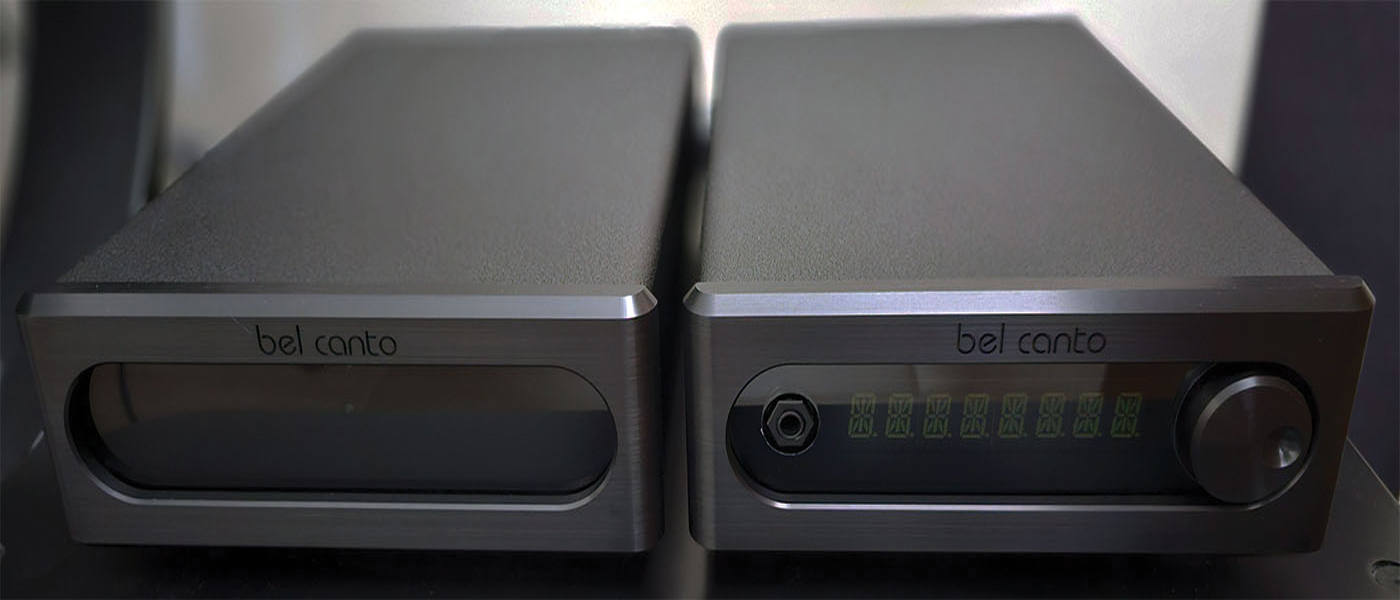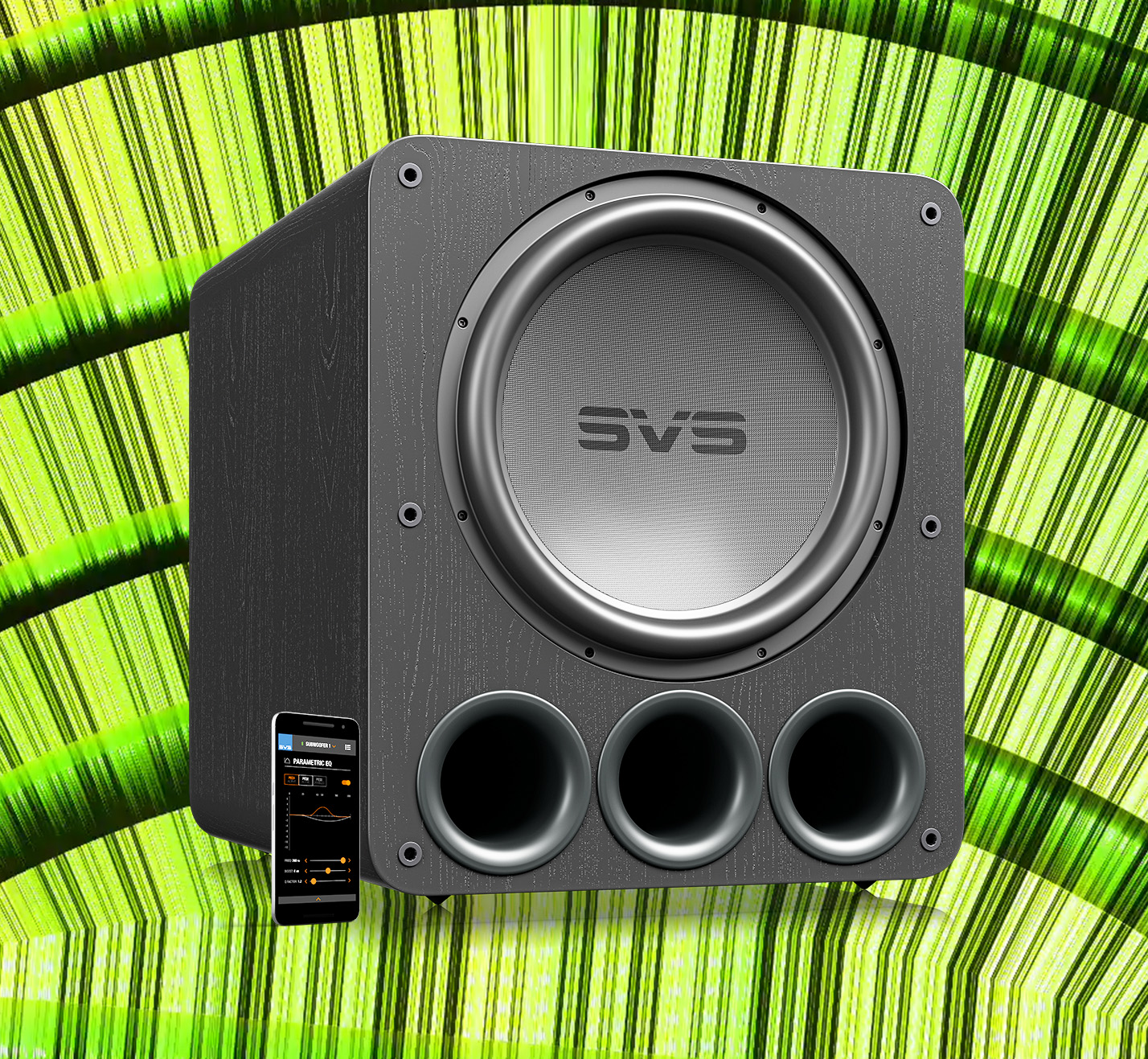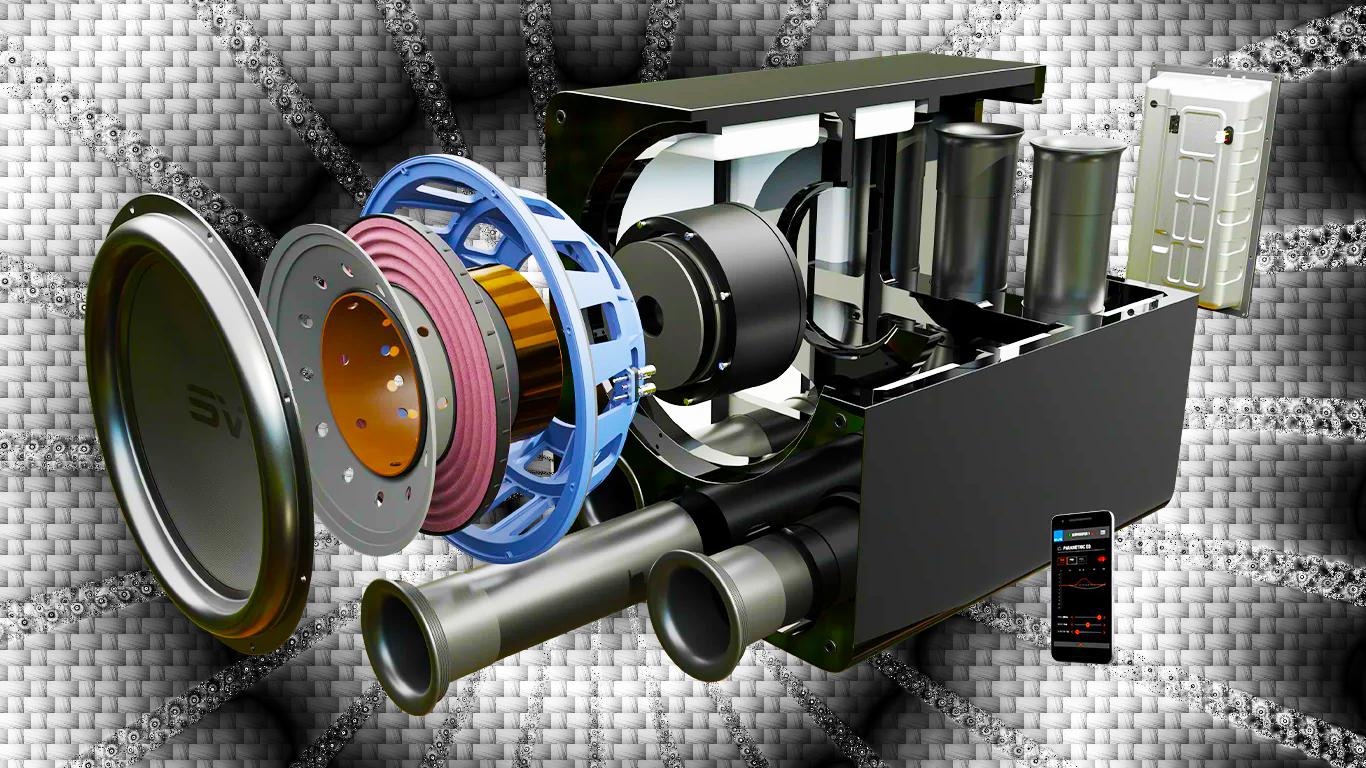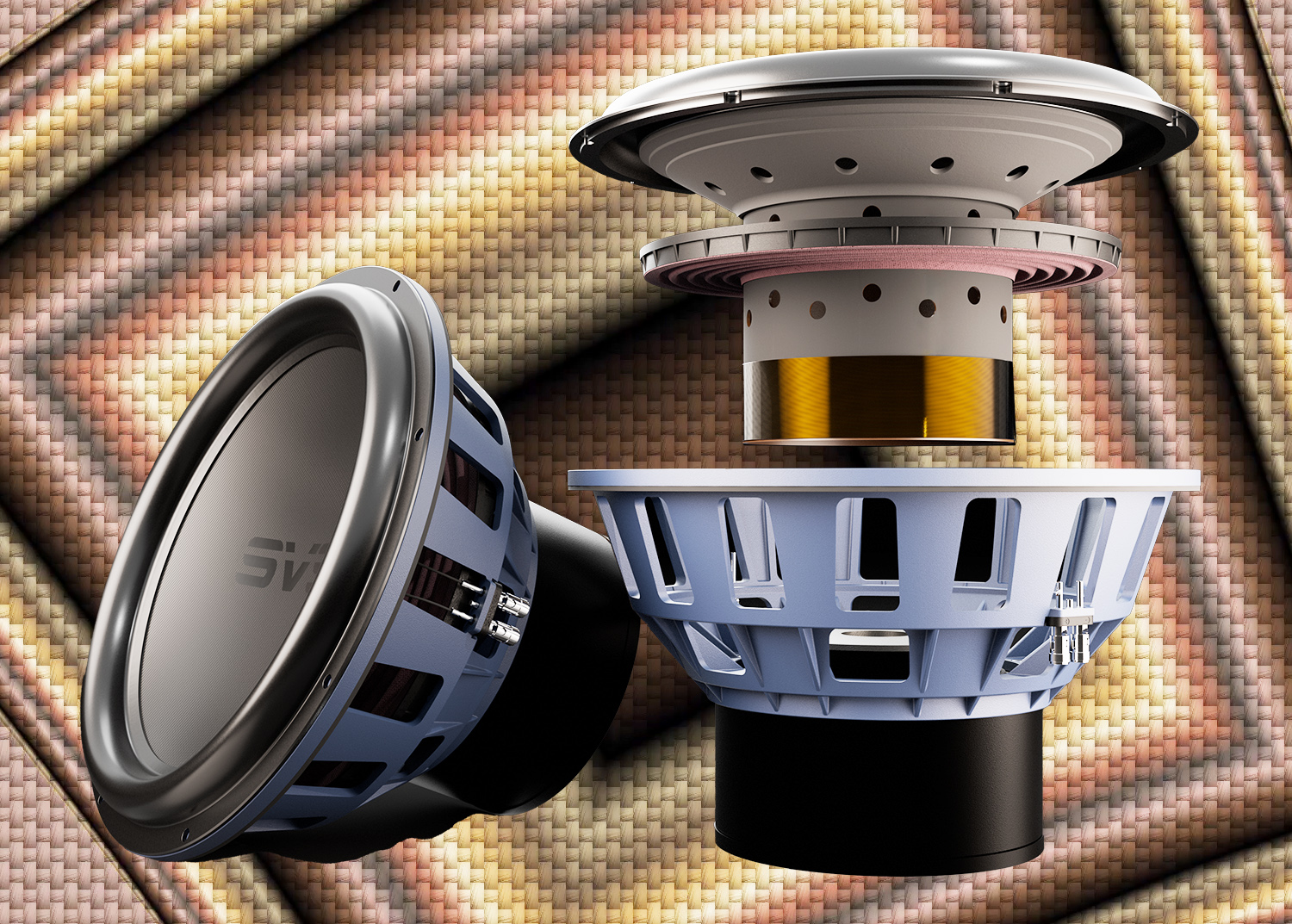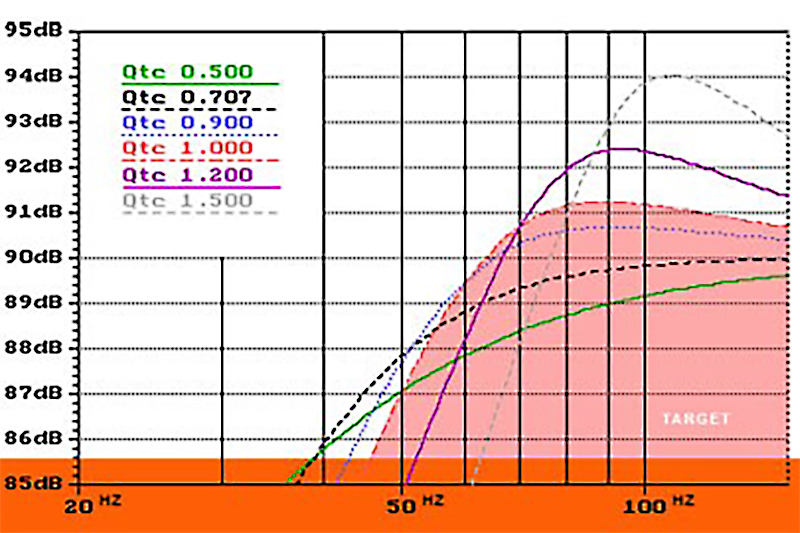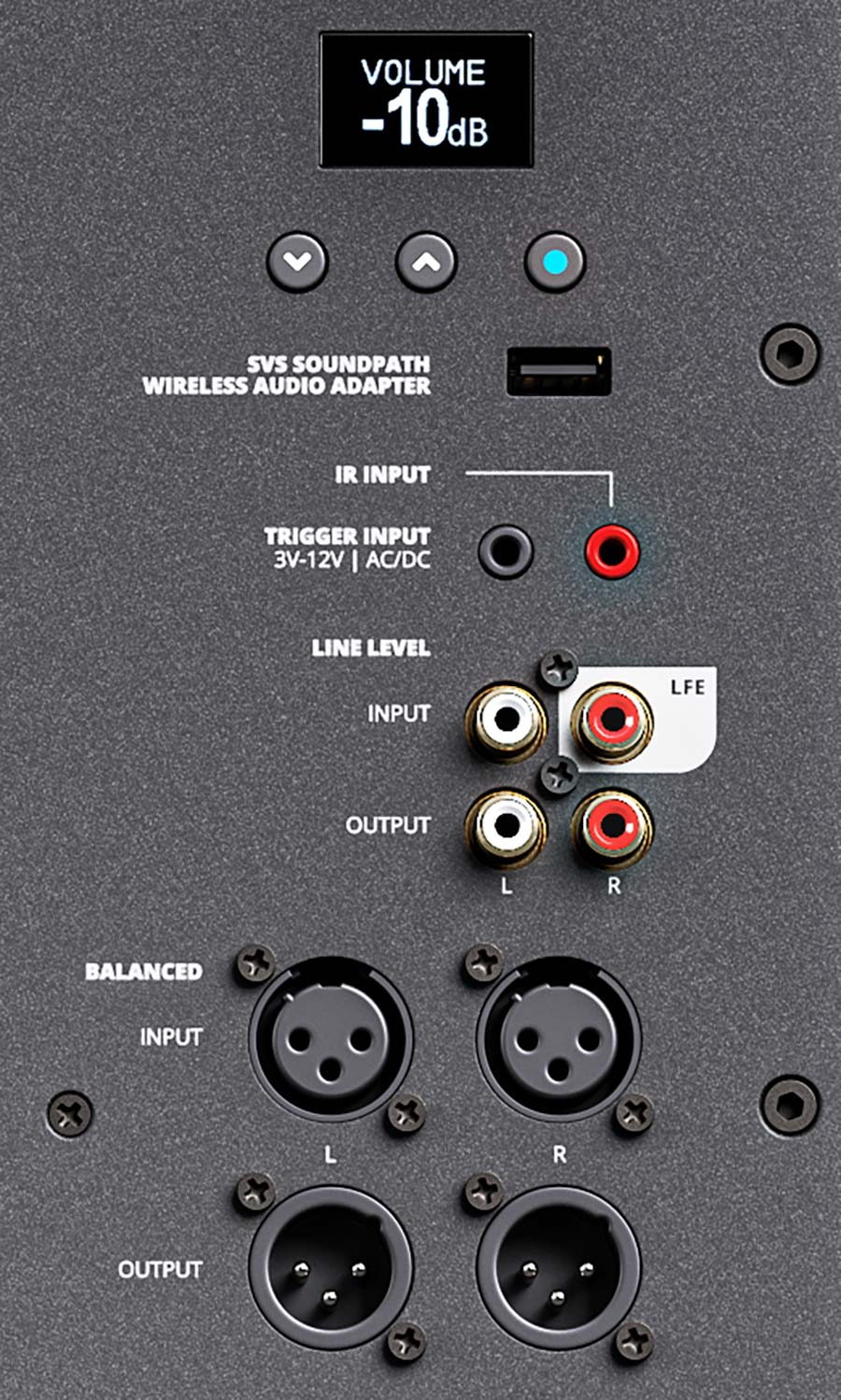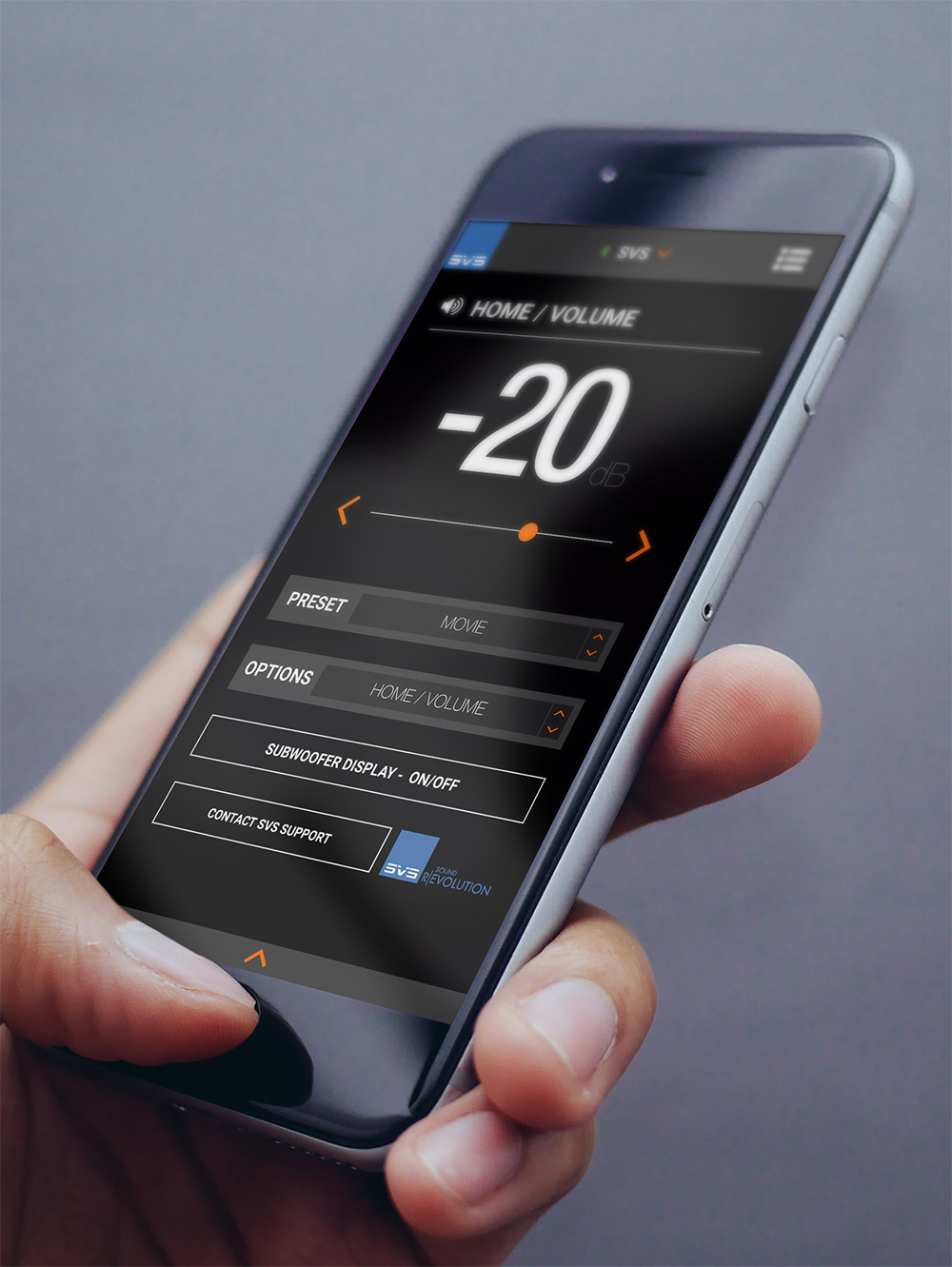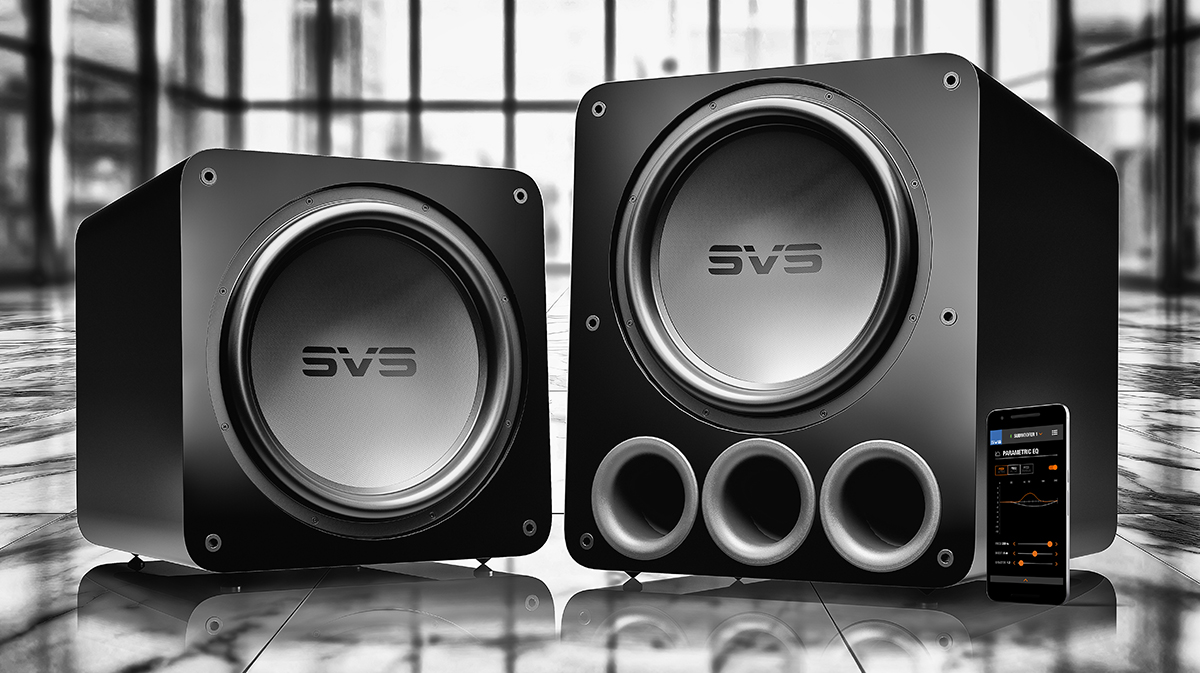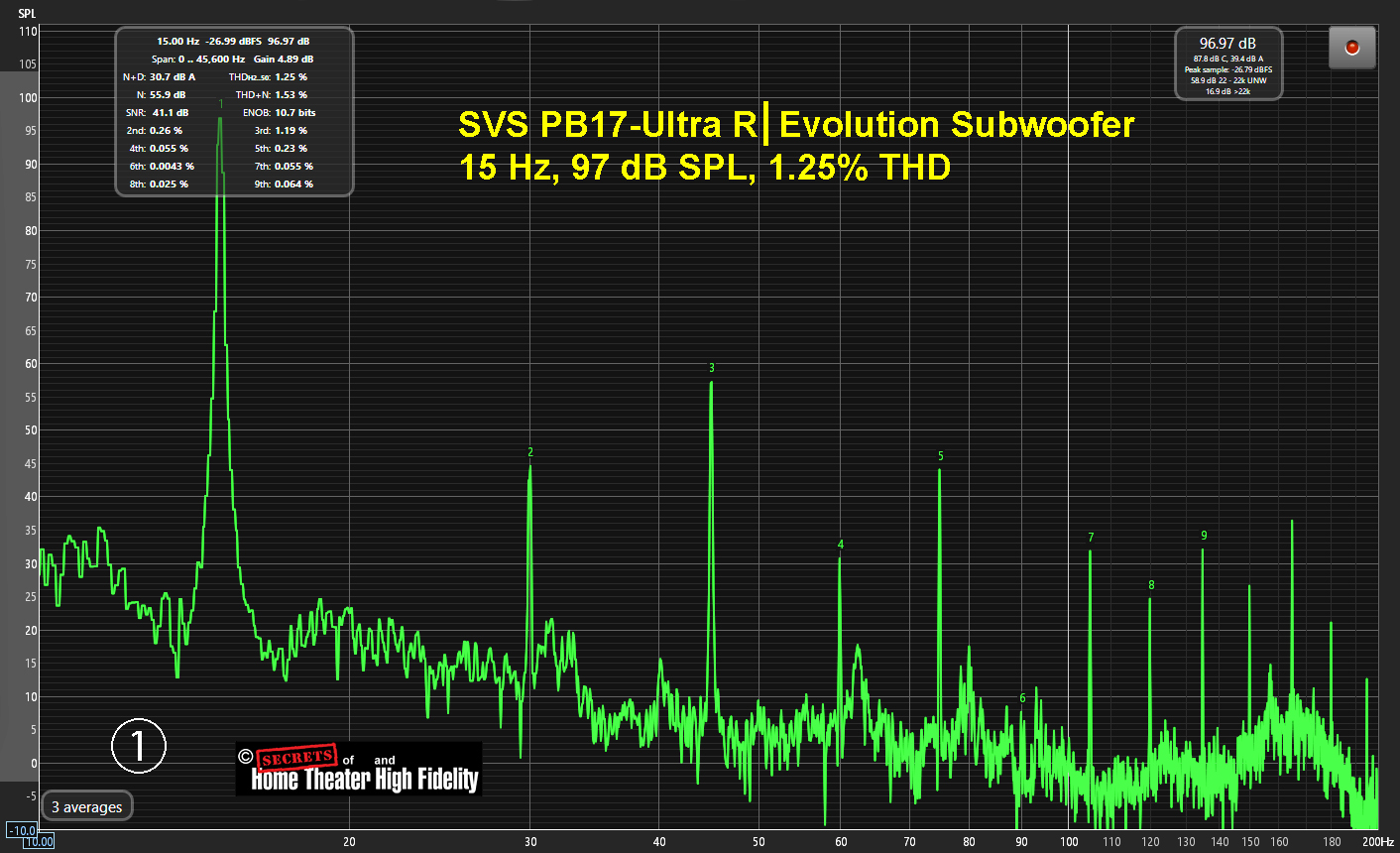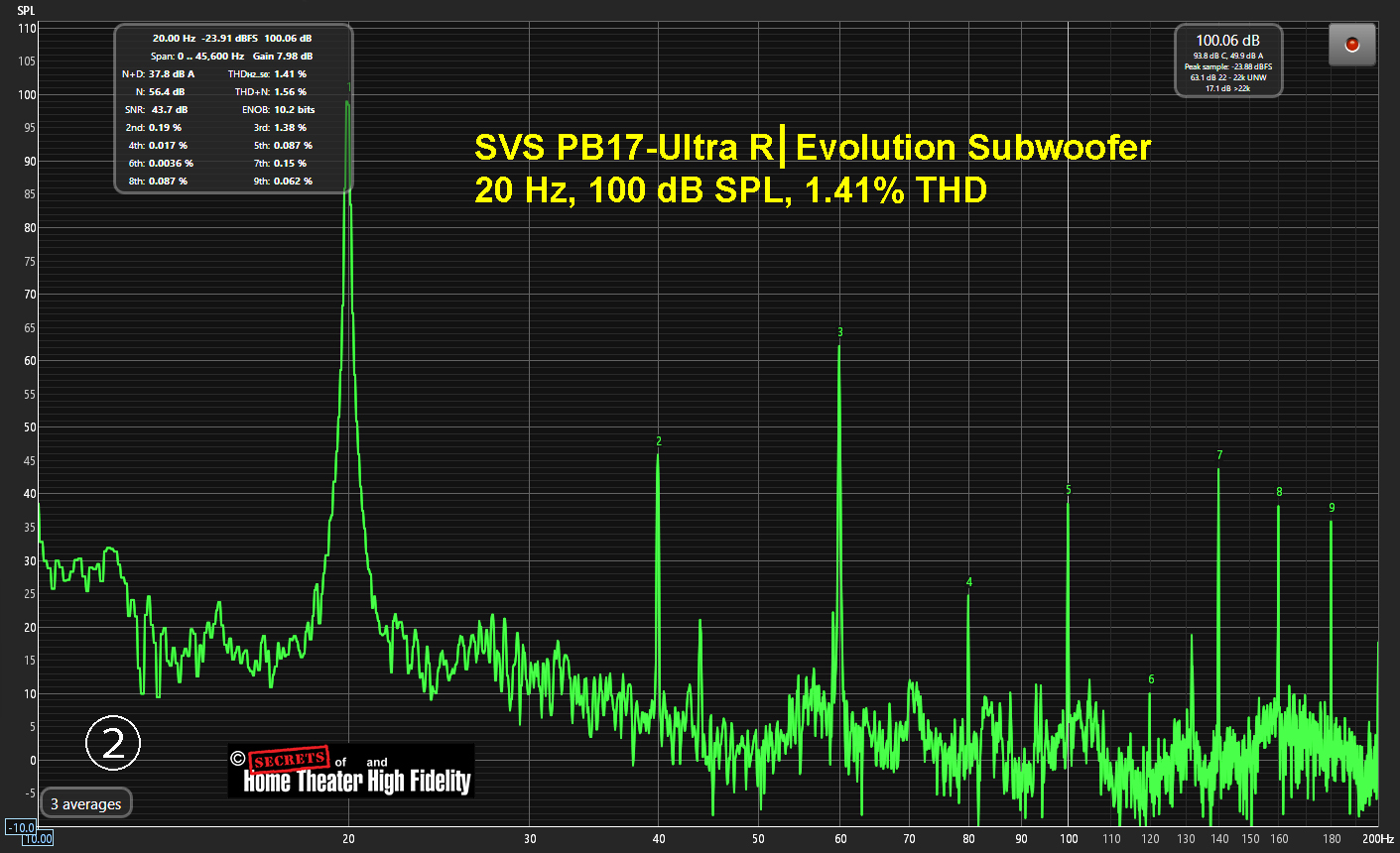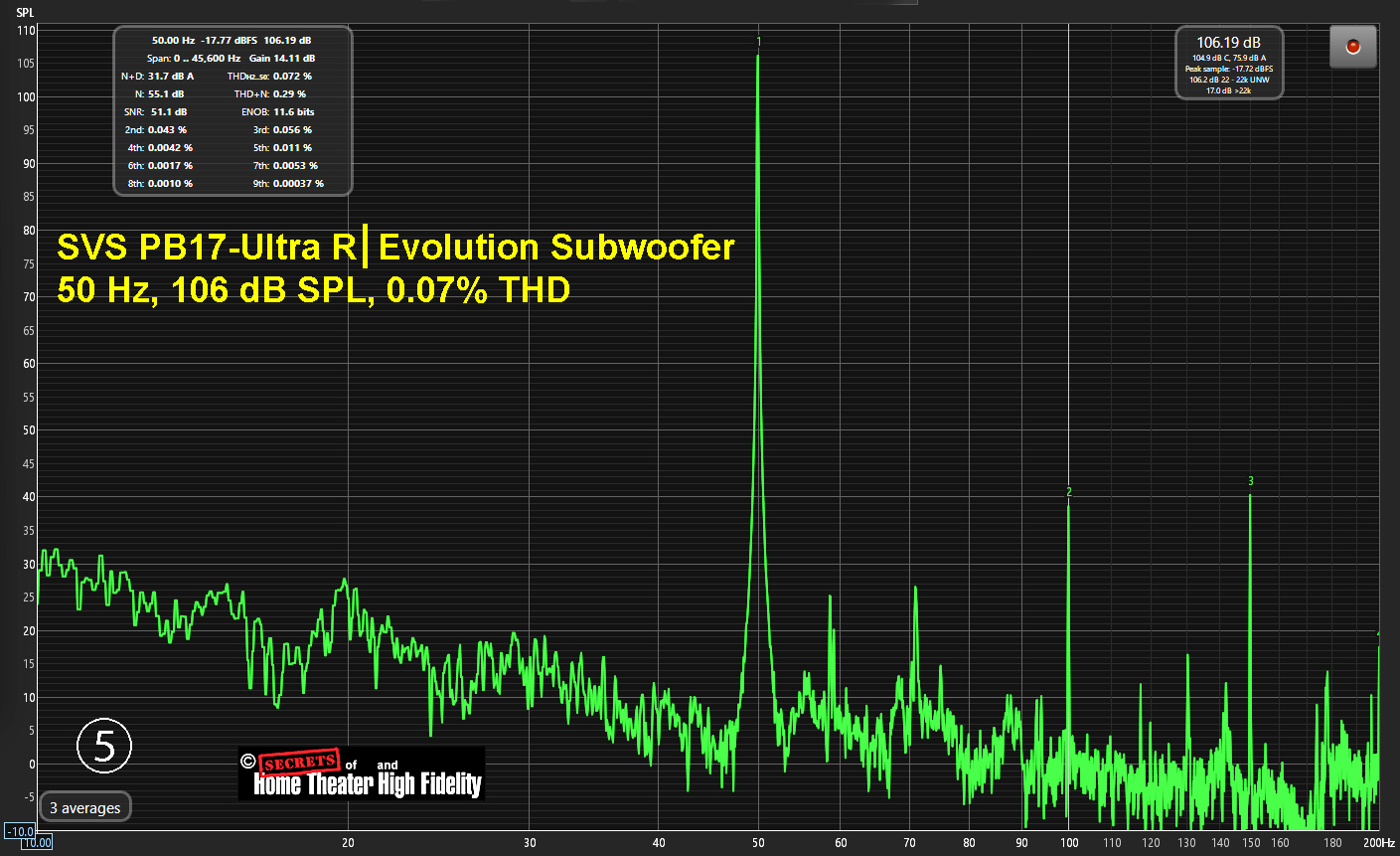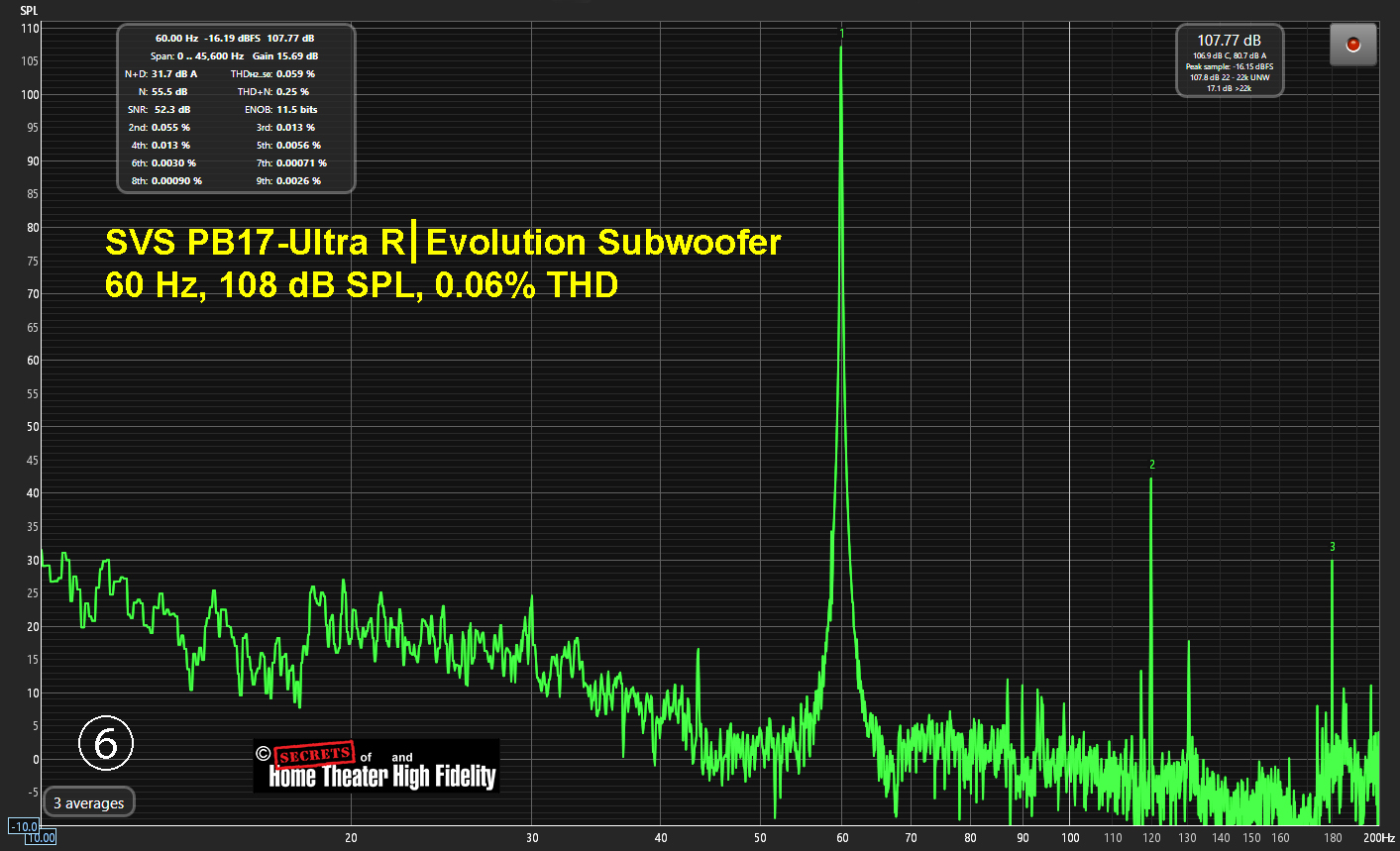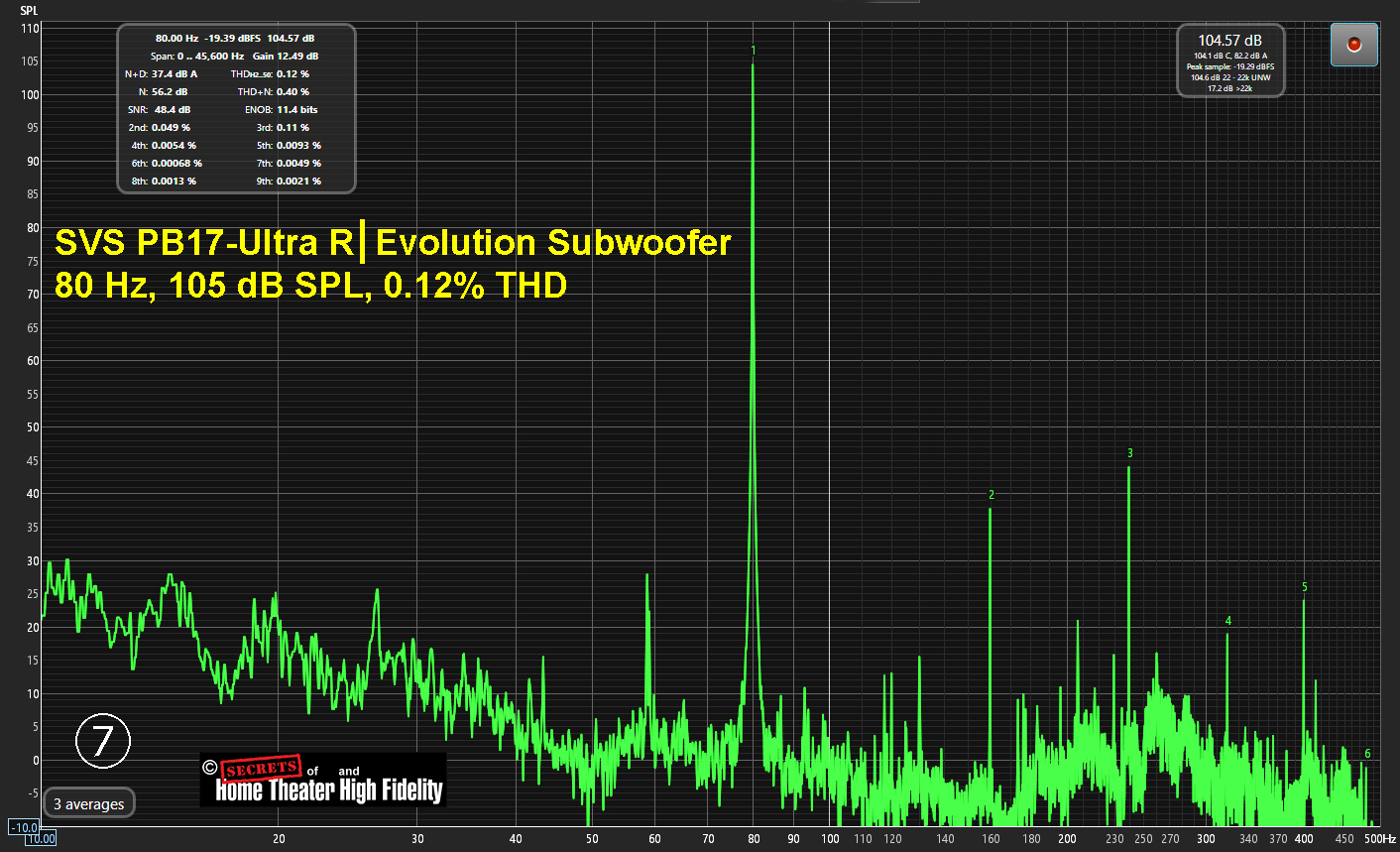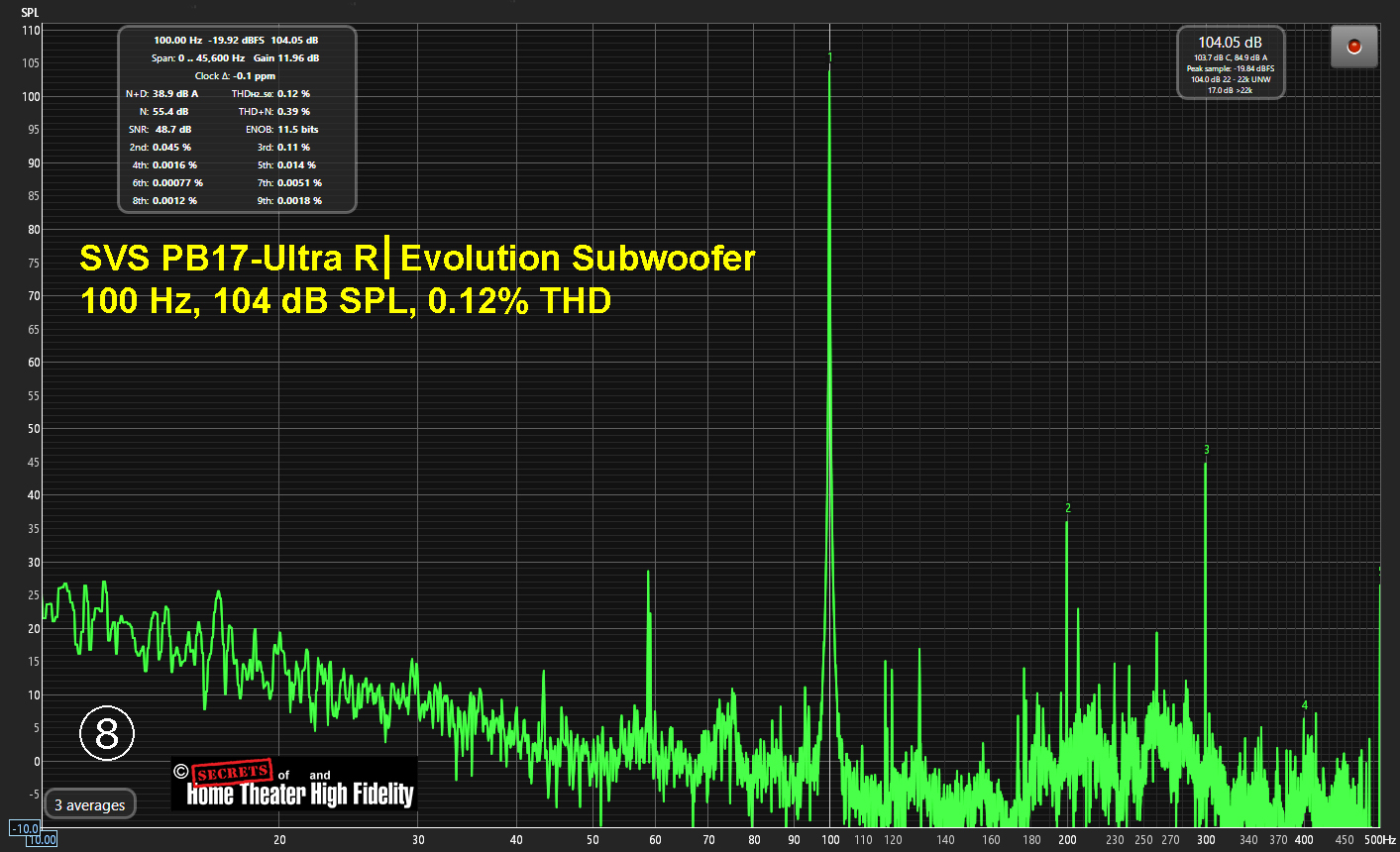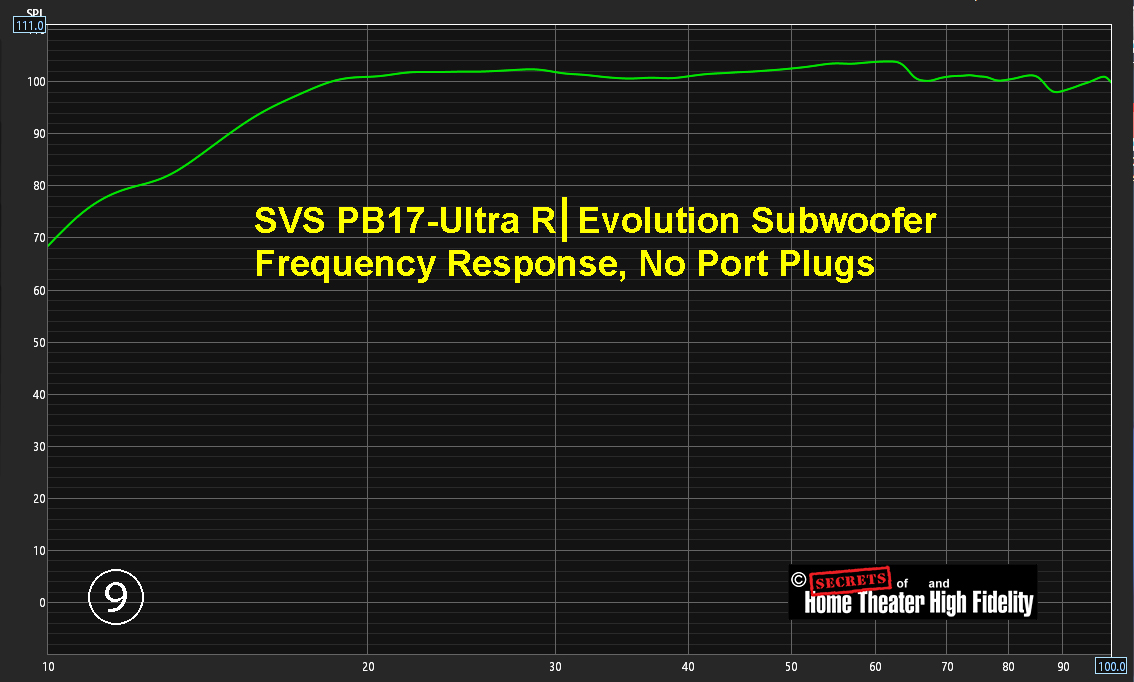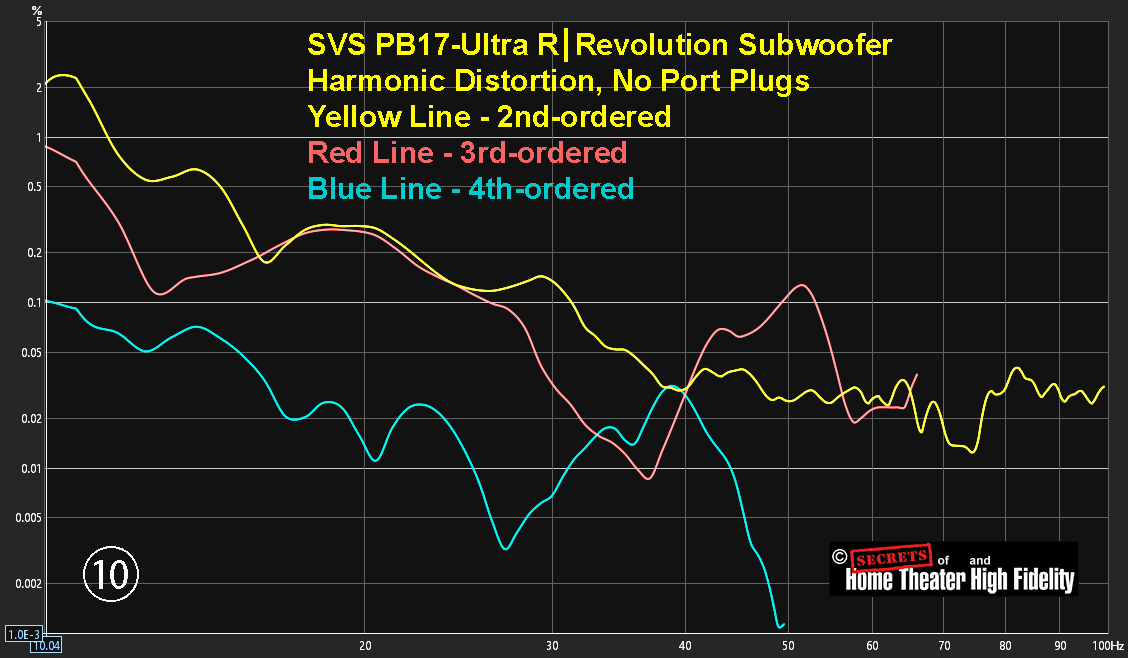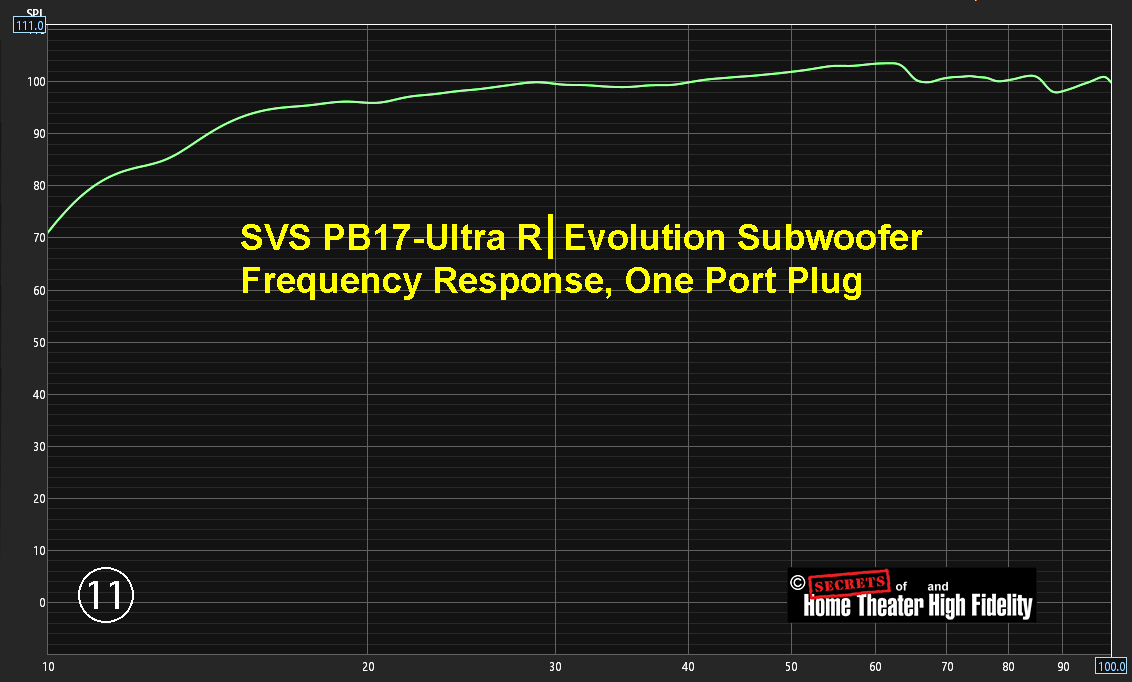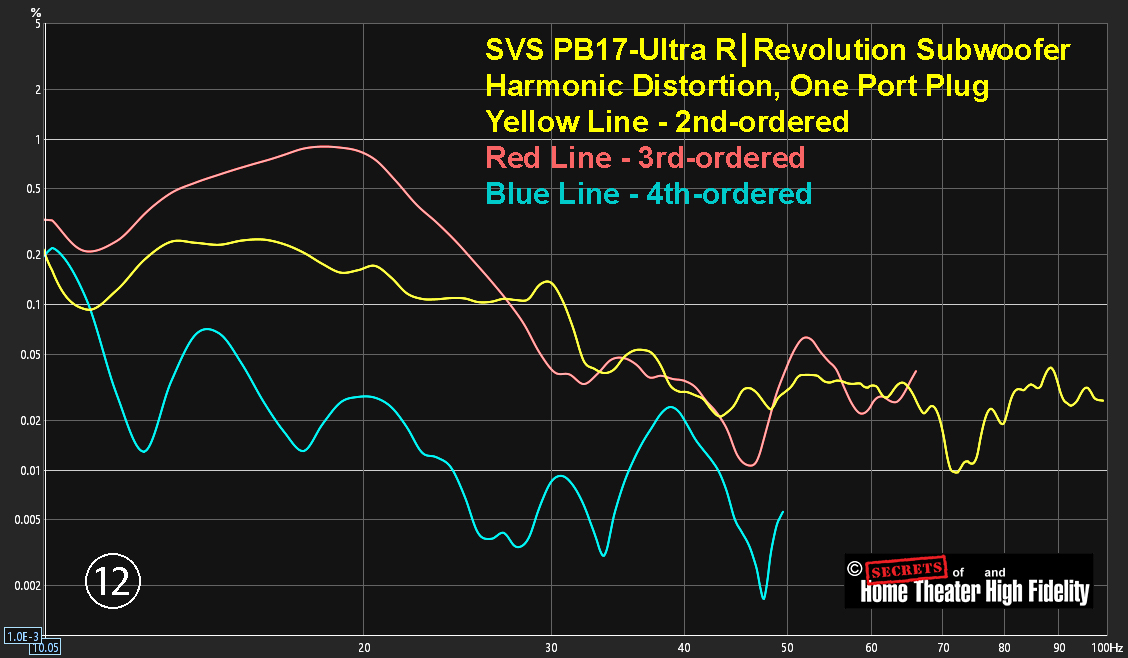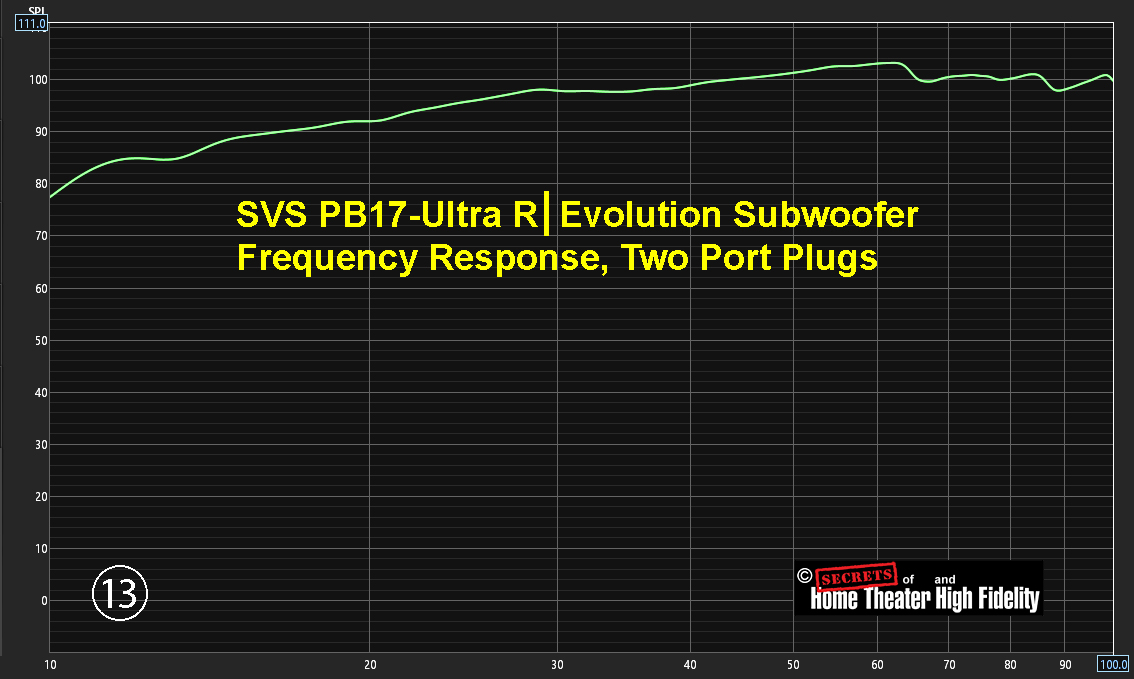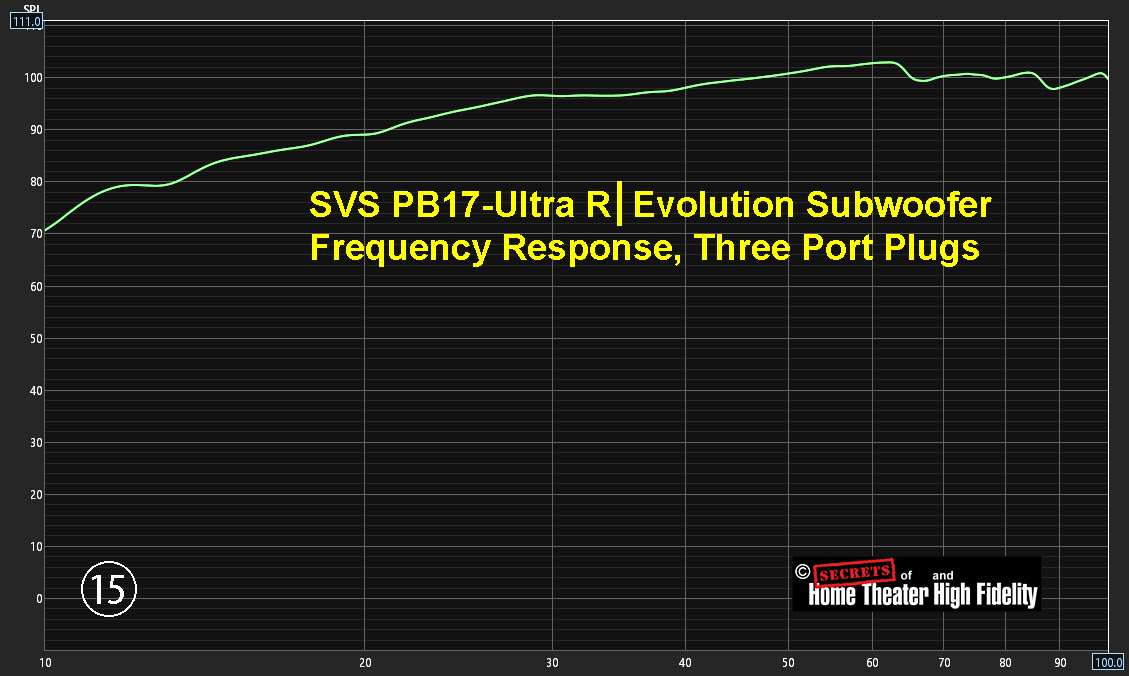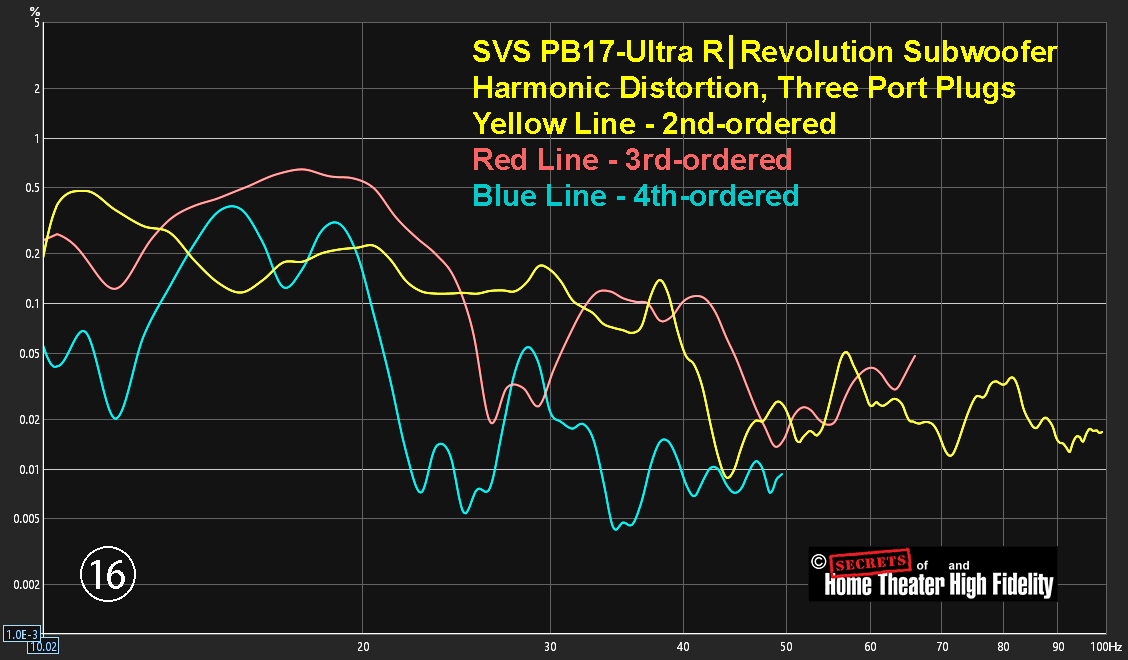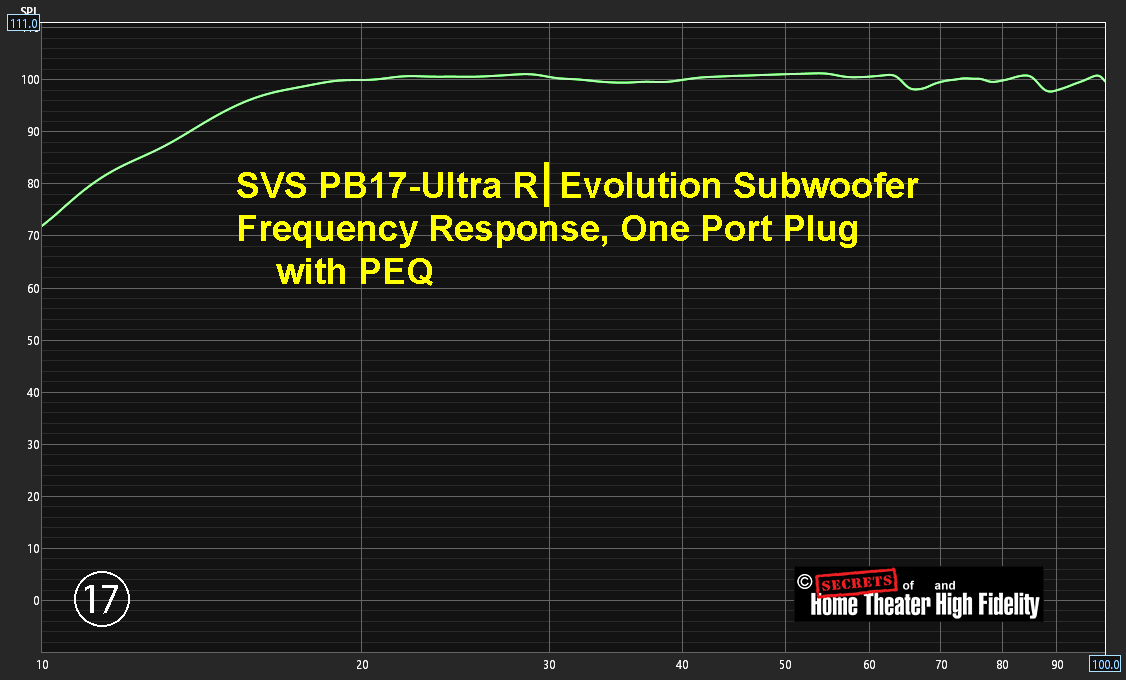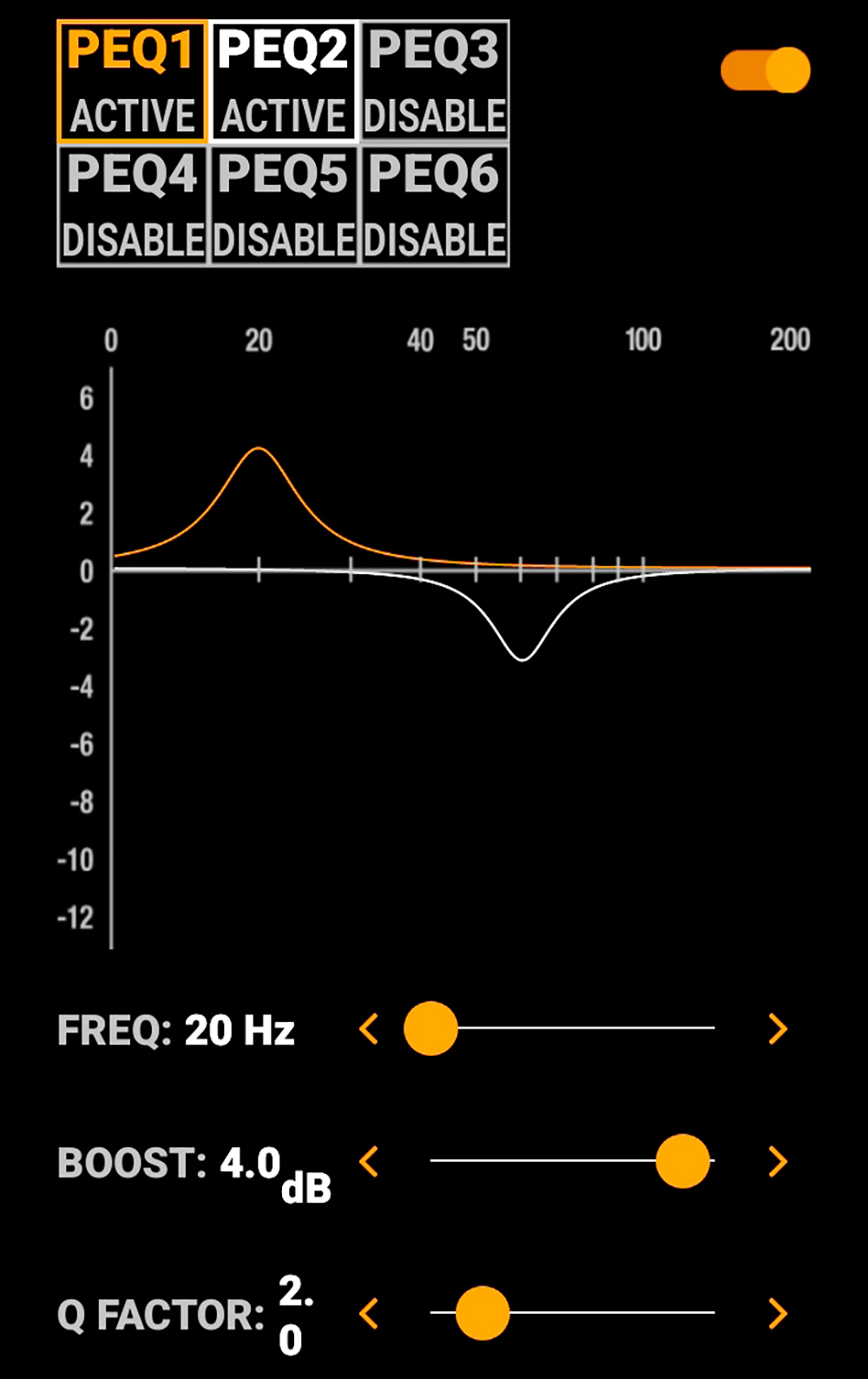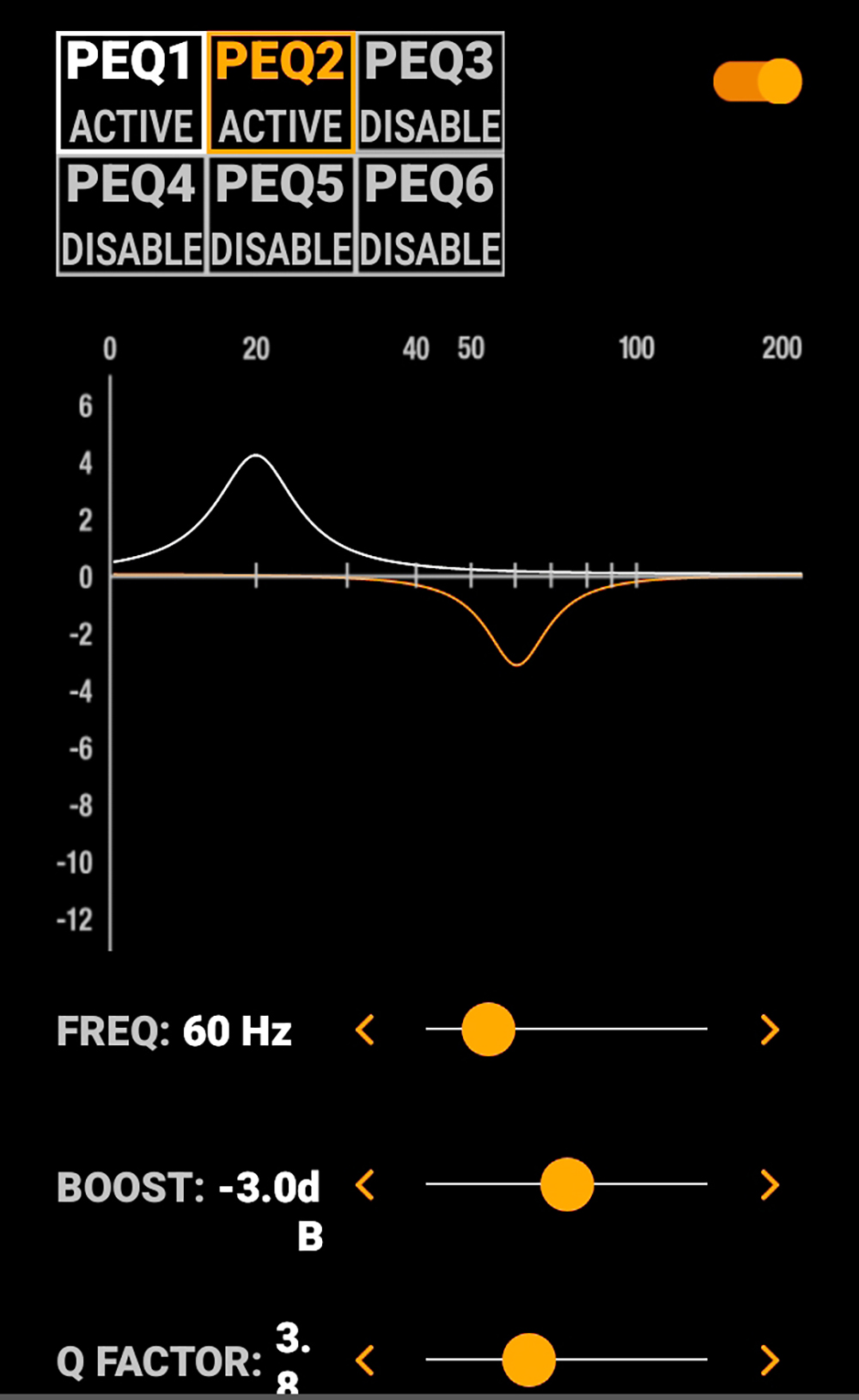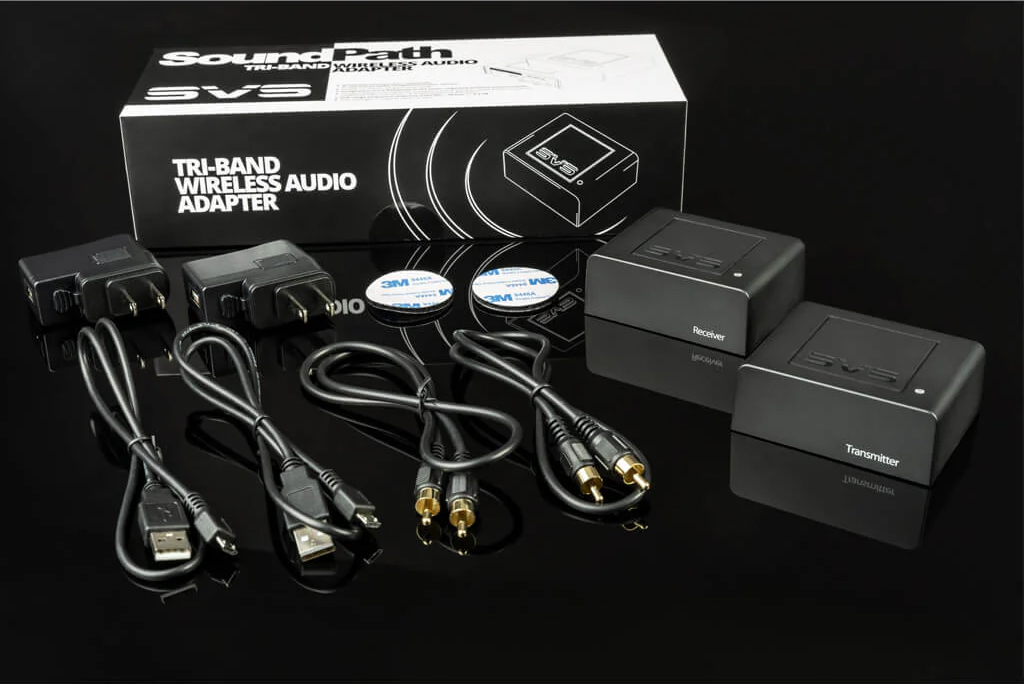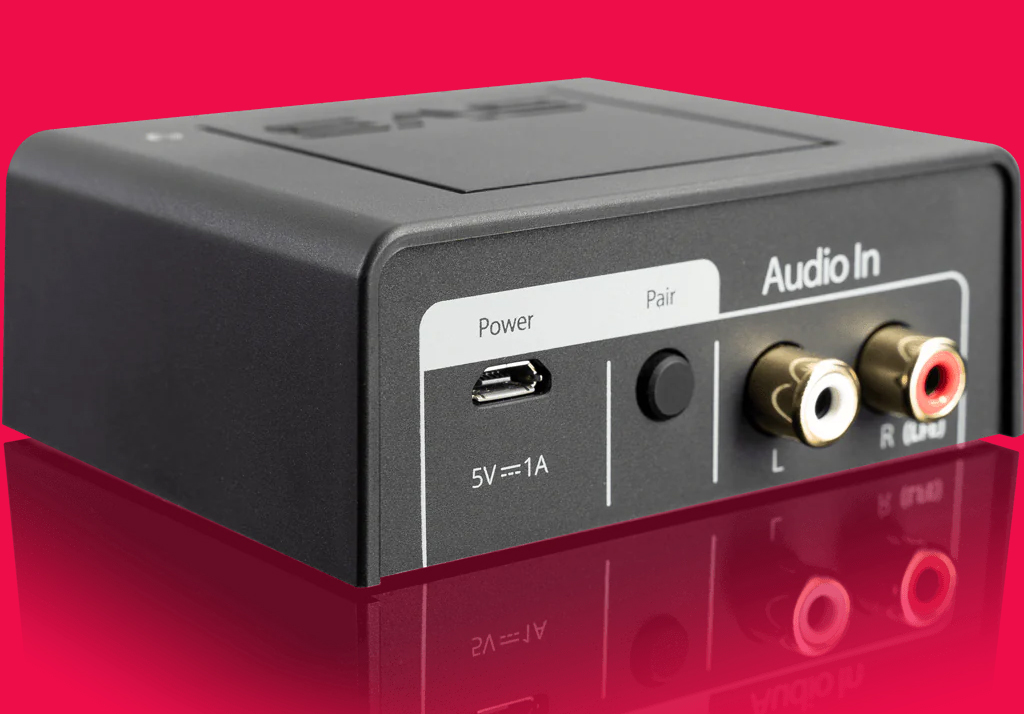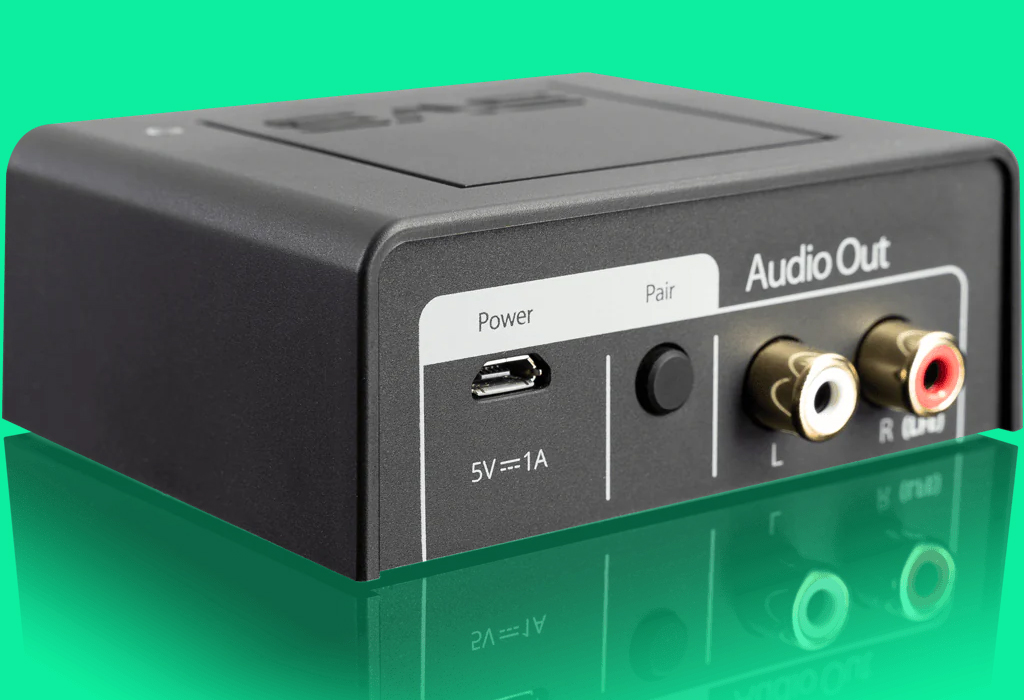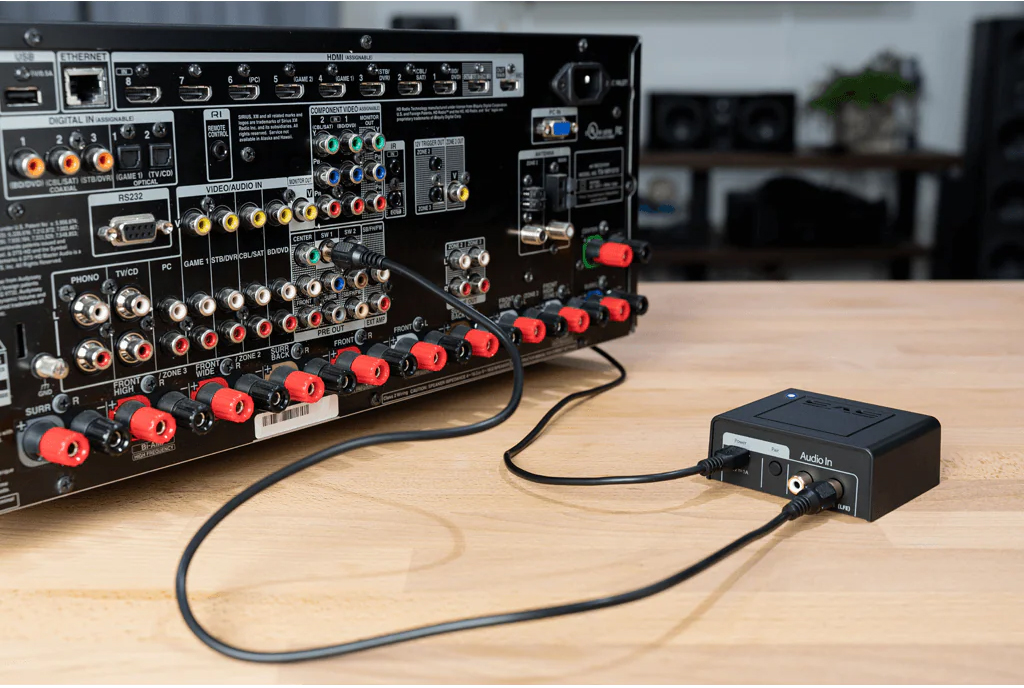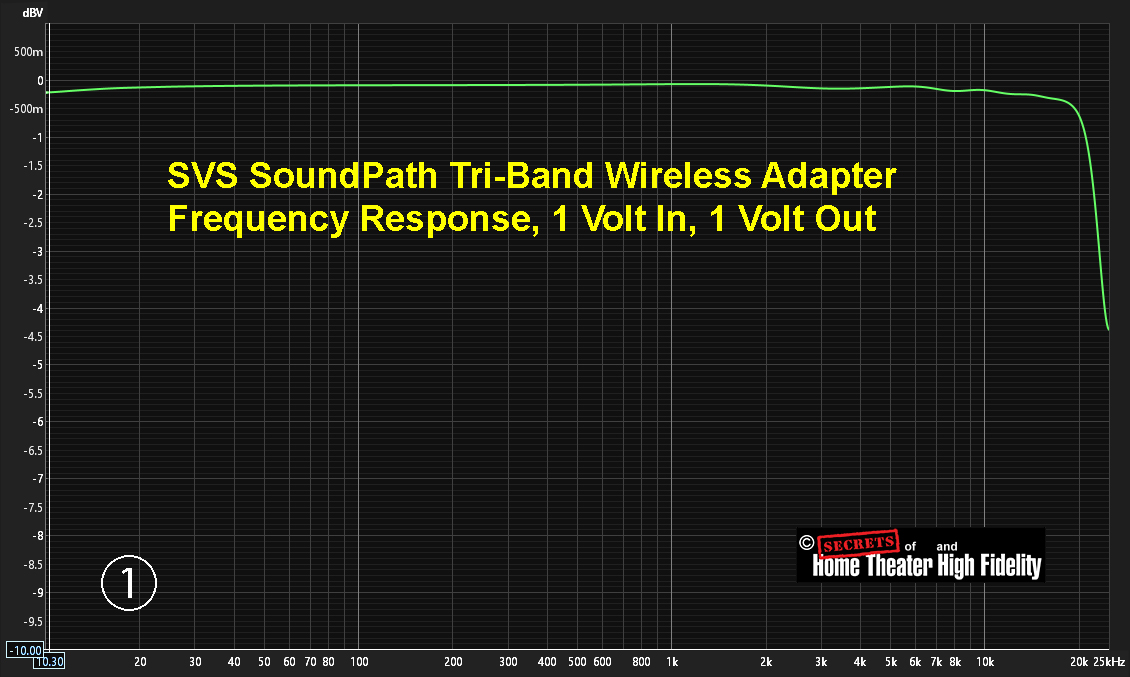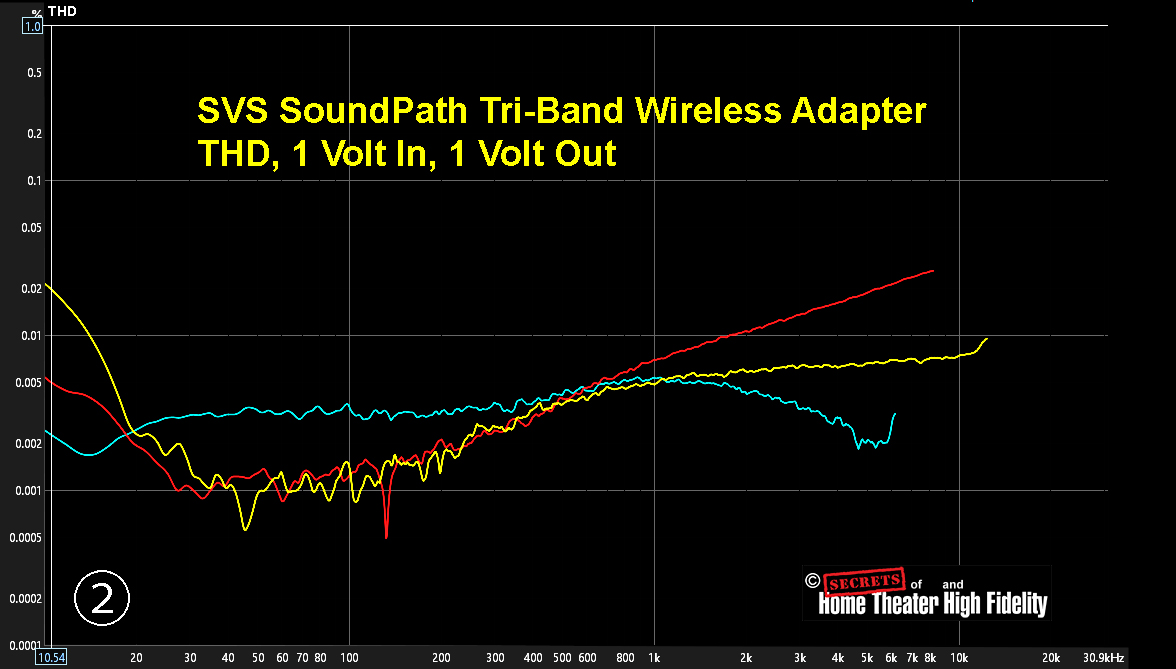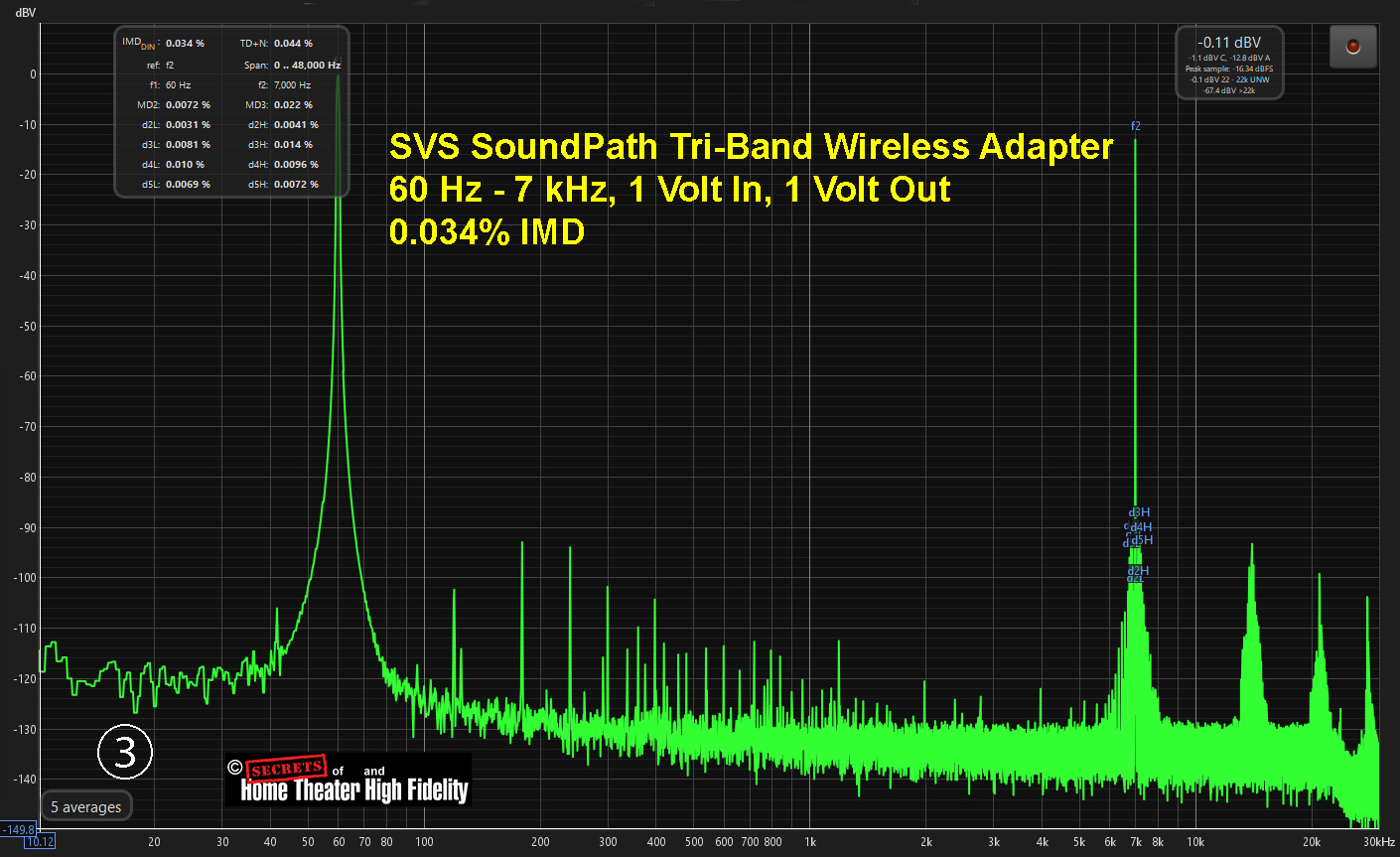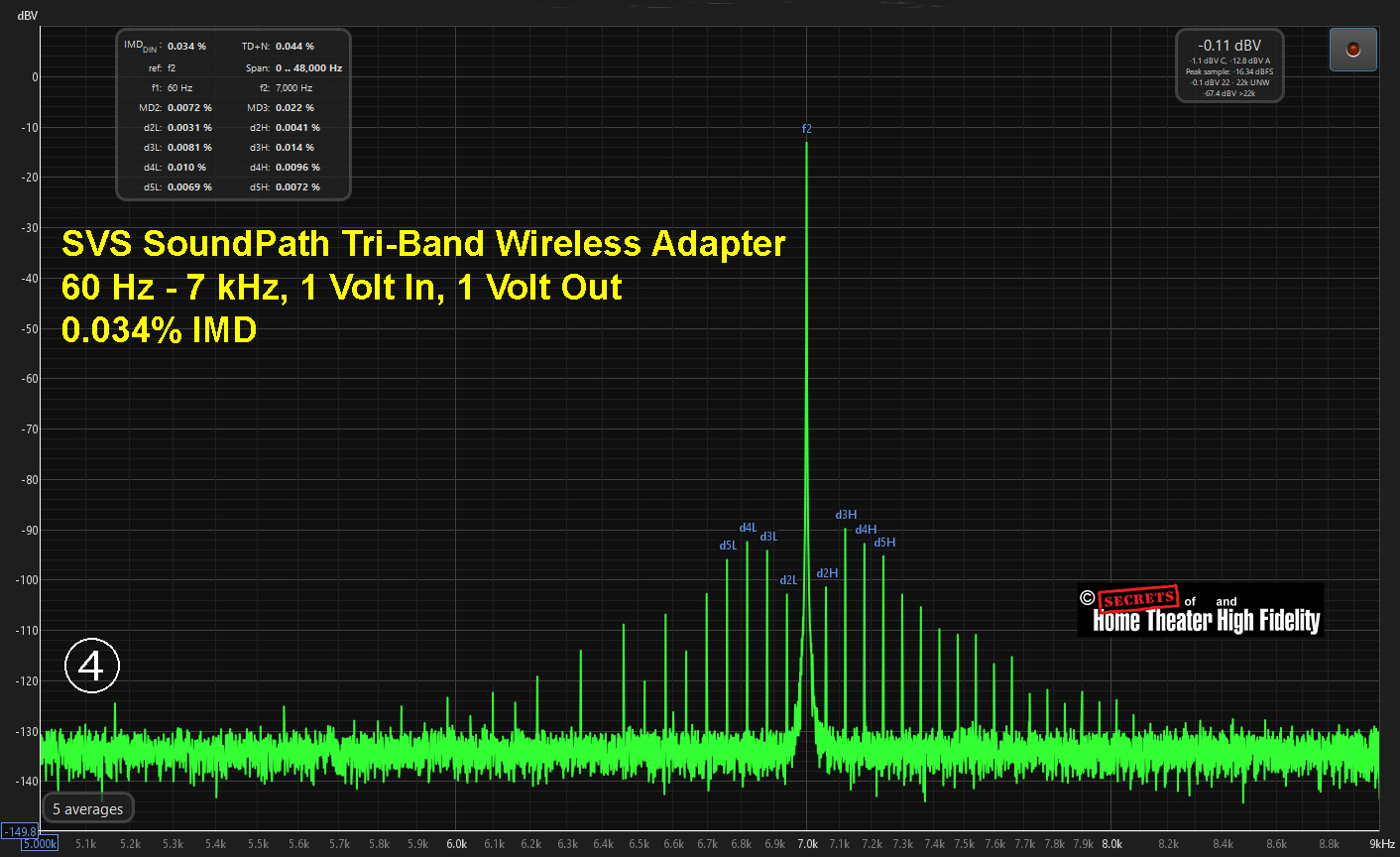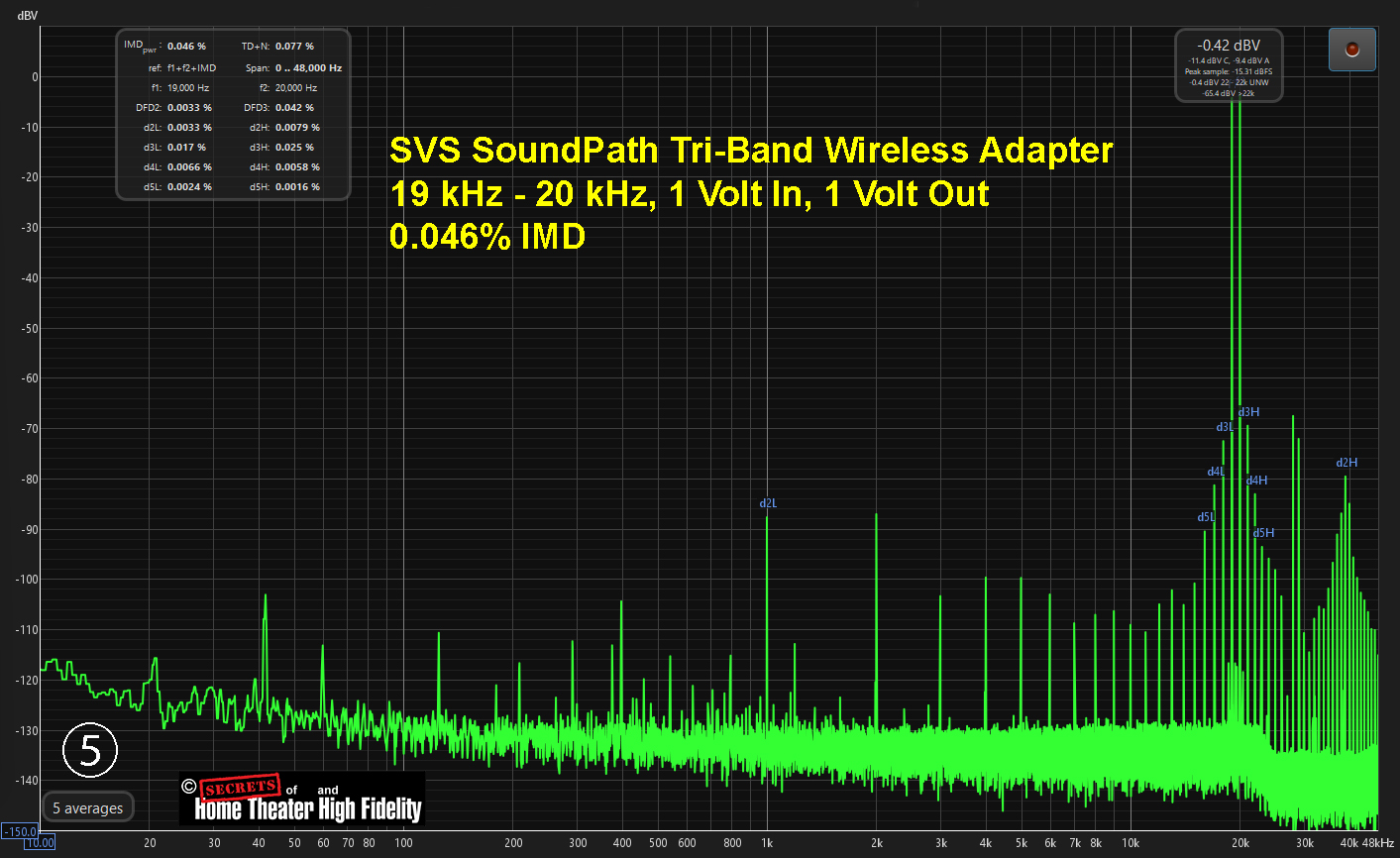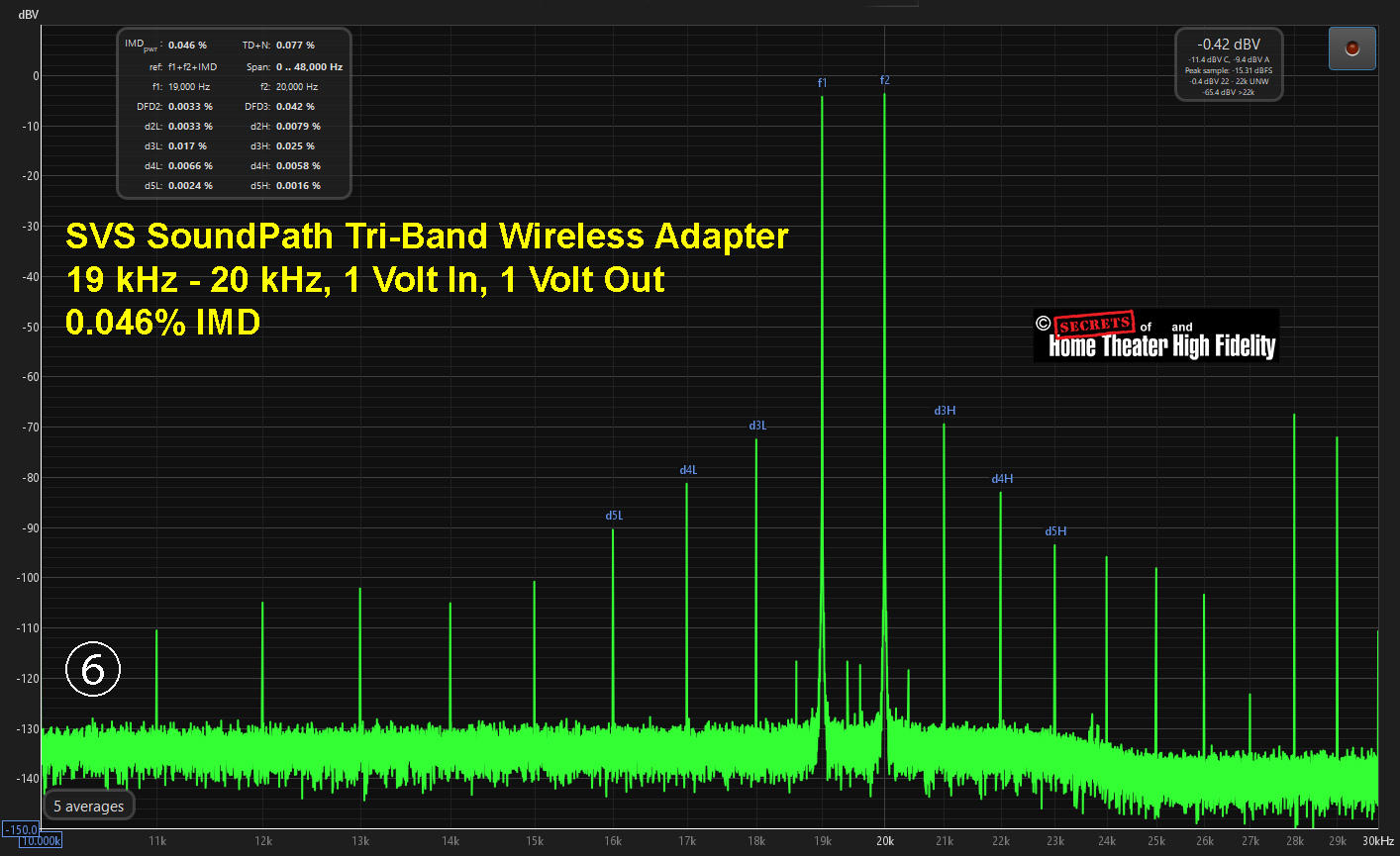The S stands for Sealed, and the P stands for Ported. I received the PB17-Ultra R|Evolution for review. If you want to have a standard-setting subwoofer powerhouse, just go ahead and order one now, as they are likely to already be flying off the SVS shelves in their warehouse, but come back to read the entire review after you have placed the order, as this thing is really something to behold, and you will want to know the details of what will arrive on your doorstep! You might also want to consider adding some more silicone caulking to your windows.
I also took a look at SVS’ new SoundPath Tri-Band Wireless Audio Adapter. It works well, and full-range too!
“Whoops, I guess I set the volume too loud.”
SVS PB17-Ultra R|Evolution Ported Subwoofer
- 17″ driver with 54-pound magnet
- Two 1,400 Watt power amplifiers
- Two 8″ voice coils
- Foundation-shaking power
SVS is a well-known brand. They cut their teeth making subwoofers and eventually branched out to include speakers in their model lineup. But, their forte is, and probably always will be, subwoofers. Their current assortment runs the gamut and has something for every application. Everything from compact to big.
The new PB17-Ultra R|Evolution subwoofer is a big one. A really big one.
It weighs 165 pounds.
The previous model was the PB16-Ultra, which, at 174 pounds, was no slouch either. The higher weight of the PB16-Ultra is due to the metal grille on the front. The PB-17 Ultra R|Evolution has a cloth grille.
If you just have a stereo system with reasonably sized speakers, and you only listen to music, a huge subwoofer is not really necessary (but who are we kidding?) No one will argue if you want one, because a subwoofer certainly can augment your music listening. But, if you have a home theater with lots of channels, and you watch lots of action movies, a big heavy subwoofer lets you feel the sound of those spaceship engines. That is a sense you don’t get with the visual experience from a flat-screen TV or projector, or the sound coming from other speakers.
General Subwoofer Specs:
Piano Gloss Black and Black Oak Real Wood Veneer finishes
Front Firing 17-inch high-excursion driver
Triple High-flow 4-inch ports
Protective non-resonant extra-thick ABS grille frame with fabric mesh cover shields the driver to prevent damage while ensuring longevity.
The Amplifier OLED Rear Panel and control interface provide fast and direct control of the most important features. Includes “Display Flip” function for viewing upside down from behind.
Robust Medium Density Fiberboard (MDF) cabinet construction with internal bracing for resonance-free performance at the highest drive levels.
Screw-in Iso-elastomer feet reduce noise artifacts and improve stability
Dimensions (with grille):
25.0” (635 mm) H x 21.7” (550 mm) W x 29.3” (744 mm) D
Dimensions (without grille):
25.0” (635 mm) H x 21.7” (550 mm) W x 28.5” (723 mm) D
Shipped Dimensions:
30.2” (767 mm) H x 27.5” (698 mm) W x 38.4” (976 mm) D
Weight (unboxed):
164.7 lbs (74.7 kg)
Shipped Weight:
186.1 lbs (84.4 kg)
MSRP:
$2,999.99 (SB17-Ultra is $2,499.99)
Website:
Company:
SECRETS Tags:
SVS, PB17, Ultra, R|Evolution, Ported, Subwoofer, SoundPath, Tri-Band, Wireless, Adapter
Driver:
All-new proprietary 17-inch long-throw driver with high-precision tuned overhung motor configuration.
63.76 lb (28.92 kg) woofer with 54.17 lb (24.57 kg) motor (magnet).
48.9 mm Xmax, 81.78 mm Xmech precision aligned excursion.
8” diameter voice coil with high current 4-layer bifilar copper-clad aluminum wire windings.
The dual voice coil design captures power delivery from dual-mono amplifier outputs into a single voice coil for maximum acoustic output.
High-temperature glass-fiber composite former/bobbing.
Four-piece high-grade oversized Y35 Ferrite magnet motor produces effortless on-demand driving force for subtle and over-the-top bass thrills.
Dual shorting rings reduce gap inductance and lower distortion.
Dual 25-strand copper-alloy and Nomex composite high-temperature leads woven through the spider provide a pristine electrical connection from the amplifiers to the voice coils.
Precision machined and narrow tolerance Top-plate and oversized T-yoke with integrated pole-piece extension made from low carbon 1010 steel for optimal magnetics and thermal capacity.
Dual Nomex extreme excursion linear suspension spiders.
Proprietary injection-molded extreme-excursion catenary SBR rubber surround ensures flawless pistonic motion for pinpoint control and accuracy without distortion at the highest drive levels.
Premium glass-fiber laminated dust cap and vented composite cone sub-structure with exceptional stiffness-to-mass ratio ensures a light, ridged, and neutral radiating surface about to move massive amounts of air with crisp precision.
High-density 17” powder-coated cast aluminum basket FEA optimized for maximum rigidity, tensile strength, and energy transference.
Nickel-plated high-tension spring terminals provide secure connections.
Amplifier:
Massively powerful STA-2800 Class D amplifier design. Two independent 1,400 Watt amplifiers, one for each voice coil.
High resolution 295 Mhz Analog Devices Audio DSP with double precision 56-bit filtering, with over 5x the processing power of their previous subwoofers, the most advanced subwoofer processor available for perfect audio reproduction.
DSP monitors every function of the amplifier ensuring precisely regulated clean voltage is delivered to and from the switch mode power supply and maximum current is pushed to the driver’s voice coils.
DSP Continuously runs complex power management algorithms and multi-point thermal, voltage, and current monitoring systems to optimize AC voltage delivery to the power supply for continuous peak performance with maximum performance and greatest efficiency.
Advanced digital audio processing and DACs (Digital-to-Analog Converters) with a 120 dB Signal-to-Noise Ratio provide greater headroom, lower noise, and flawless fidelity.
Dual-mono discrete Class D amplifiers create effortless and endless power from eight massive 60A 200V MOSFETs, resulting in lower EMI and highest efficiency while providing effortless power each voice coil, producing SPLs and low-frequency output with pristine clarity well beyond reference listening levels.
All new Switch Mode Power Supply (SMPS) includes a two-stage 100 v-240 v full range active Power Factor Correction (PFC) which pre-regulates mains to solid 390 V DC regardless of mains voltage or quality, ensuring a consistent 160 V rail voltage for the dual-mono amplifiers.
Power-Factor-Correction (PFC) time aligns the AC voltage to the AC current resulting in less heat, greater efficiency, peak power output, and the ability to maintain rated power over a wide range of AC voltages.
Onboard AC line conditioner filters and stabilizes incoming voltage, corrects waveform distortions, and eliminates electromagnetic and radio interferences to optimize signal quality and audio performance.
The new convective cooling plate design pulls cool outside air through vents at the bottom of the amplifier plate, flowing over the amplifier components and internal heat sinks, eliminating the need for external heatsinks.
Customer EQ and DSP limiter settings specifically for the 17-Ultra allow the subwoofer to take control of a room and pressurize it with accurate, heart-pounding, acoustically tuned bass.
Unbalanced RCA 10kohm input impedance (compatible with consumer and professional audio up to 4 Vrms inputs).
Balanced XLR 14kohm input impedance (compatible with consumer and professional audio up to 14 Vrms / +24 dBu inputs).
USB provides power for the SVS SoundPath Wireless Audio Adapter (sold separately) which eliminates the need for a cable run to the subwoofer from the source component.
Auto/On and Trigger options through the App for maximum installation convenience (3.5mm trigger Input 3-12V AC/DC).
3.5 mm IR input for easy integration with control systems.
Green 0.5-watt low standby power consumption.
RoHS-compliant, lead-free construction, worldwide safety certifications.
Subwoofer Frequency Response:
14Hz to 220Hz +/-3dB (standard mode – all ports open)
12Hz to 220Hz +/-3dB (extended mode – 2 ports open)
14Hz to 320Hz +/-3dB (sealed mode – all ports sealed)
SVS App Features:
Compatible with Apple iOS, Google Android, and Amazon Fire platforms, the industry-leading SVS Subwoofer Control Smartphone app allows convenient and intuitive management of all subwoofer controls.
The Analog Devices DSP supports a comprehensive menu of functions, including volume, fully adjustable low pass filter, phase, polarity, six PEQs, room gain compensation, tuning modes, power management settings, and more.
Includes three convenient memory presets for fast and easy global system adjustments to match listener preferences.
Subwoofer Auto Room Equalization (available via over-the-air app update soon).
Uses your mobile device’s built-in microphone to measure the acoustic performance of your subwoofer in your room.
Automatically calculates equalization filters to optimize the subwoofer and room combined performance at your listening position.
Unique bidirectional feedback shows adjustments in real time on both the app and subwoofer interface.
Easy-to-follow tutorial provides clear guidance for all functions.
Secrets Sponsor
Here (below) is an “exploded view” of the subwoofer showing the parts of the driver and other things inside the enclosure. The driver magnet weighs 58 pounds! Two separate 1,400-watt Class D power amplifiers drive two separate 8″ 3 Ohm voice coils. That is a lot of power. The voice coils are large so they can handle the high current, but also, they serve to stiffen the driver cone so that it does not flex.
And here is an unexploded view of the driver specifically, alongside the exploded view for comparison.
The Qtc of the PB17 is targeted at 0.6. Qtc specifies the frequency response roll-off and resonance. The Qtc is only relevant when all three ports are plugged so that it becomes a sealed enclosure. The value of 0.6 means that the frequency response has a smooth roll-off curve. Notice that other Qtc values have more or less of a hump and faster or slower roll-off.
The rear panel has an LED readout panel and buttons to adjust the parameters. With the new 17″ driver, the LED panel would not fit on the front as it does with the PB16 and SB16-Ultras, but these subs are meant to be controlled with the phone app. However, you can invert the LED readout so you can read it from over the top. There is also a USB port that will power their new SVS SoundPath Tri-Band Wireless Audio Adapter (receiver) that lets you place the sub anywhere and still maintain connection with your surround sound processor wirelessly. Lastly, there is an IR input, a trigger input, line-level RCA and XLR inputs, and XLR outputs (to feed other subs if you wish).
There is a very nice phone app that is available for the PB17-Ultra as well as the other SVS subwoofers. It lets you control the volume, but also other things, including four EQ bands, Phase, Polarity, Low Pass Filter, Room Gain Compensation, and Port Tuning. It also has links to SVS Support and a Tutorial.
To have the PB17-Ultra perform at its best, I used one of my 240 Volt wall sockets. The power amplifiers can be used with 120 Volts or 240 Volts without having to change any switches. The amplifiers recognize whichever voltage you are using. I recommend adding 240 Volt outlets in your home theater for power-hungry products like this. I have almost 10,000 watts of power in my home theater, and I installed two separate circuit 240-volt outlets for my subs and four 600-watt Pass Labs monoblock power amps. If you only have one big subwoofer, 120 Volts is probably enough. But if you have several big subs, as I do, and you want to experience extended deep sounds, like a spaceship taking off, think about installing those 240 Volt sockets so the voltage will not sag.
There are two versions of this subwoofer: the SB17-Ultra which is sealed and the PB17-Ultra which is ported. For the PB17-Ultra, you can use it with all three ports open, one port sealed (with one of the included foam plugs), or two ports sealed. You could seal all three ports, but if you want to do that, you probably should just purchase the SB17-Ultra which is several hundred dollars less expensive and physically smaller.
 “Ah, the wind blowing in my hair.”
“Ah, the wind blowing in my hair.”
I listened to the PB17-Ultra along with an Emotiva RMC-IL 9.1.6 Surround Sound Processor, Pass Labs XP-20 Stereo Preamplifier, Classé CA-5200 Five-Channel Power Amplifier, Pass Labs X600.8 Power Amplifiers, Carver Platinum Mark IV Ribbon Speakers, MartinLogan Summit X Hybrid Electrostatic Speakers, and MartinLogan Stage X Hybrid Electrostatic Speakers. I also have an SVS PB16-Ultra Subwoofer and MartinLogan BalancedForce 212 Subwoofer that I turned on when running everything to see how the PB17-Ultra integrated into my complete system. For the most part, however, it was just the PB17-Ultra that was powered on.

Prometheus
Prometheus (2012) is one of the Alien movies in the series. It has some amazing engine sounds, and the PB17-Ultra knows how to present them. My neighbors are aware when a subwoofer like this one is doing its job in my home theater.
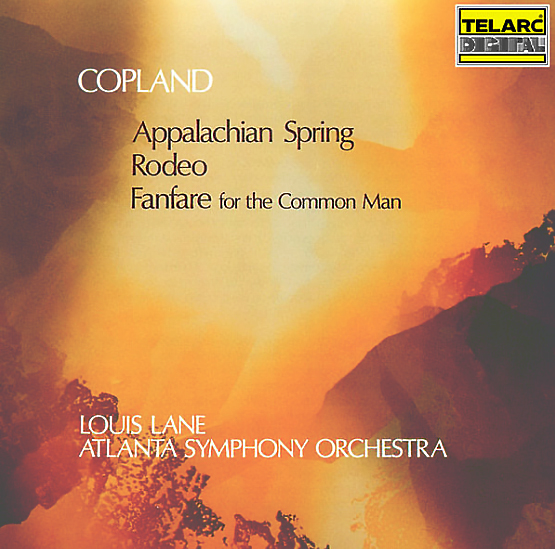
Louis Lane, Atlanta Symphony Orchestra, “Copland: Appalachian Spring, Rodeo & Fanfare for the Common Man”
This particular version of Copland’s Fanfare for the Common Man, Louis Lane, Atlanta Symphony Orchestra, Telarc, is an old one, but it is the best one, in my opinion. The bass drum thuds in the opening sequence and throughout the composition, are really deep and intense. Again, my neighbors know about this CD. I felt that drum to the core of my being.

Inger-Lise Ulsrud, Elisabeth Holte, Uranienborg Vokalensemble, “HIMMELRAND (Holistic Mix)”
One of my regular albums that I use for review is this one, Himmelrand, Inger-Lise Ulsrud, Elisabeth Holte, Uranienborg Vokalensemble, 2L, 2016. It has some wonderful pipe organ music along with choir. The deep pedal notes were reproduced without any audible distortion, loud enough to feel down to my toes.
For the bench tests, I used my computer to generate the test signals through a Lynx E22 soundcard, output via XLR to one of the PB17-Ultra’s XLR inputs. I set the soundcard’s output voltage to 200 mV RMS and the volume control on the PB17-Ultra to -10 dB, with the microphone 6″ from the subwoofer, 8″ above the floor, on-axis, pointing at a spot between the bottom of the 17″ driver and the top of the ports. I used one foam port plug in the center port, except where noted.
The PB17-Ultra can reproduce 15 Hz (Figure 1), although it is several dB below the output at 20 Hz with the same volume control setting. The point is, at 15 Hz and 97 dB SPL, distortion was only 1.25%. Note that, for speaker tests, the distortion is specified without the noise component because the noise is the background sound in the test room, not noise from the subwoofer. Also, since the microphone was 6″ in front of the subwoofer, this is equivalent to about 87 dB SPL at 1 meter.
At 20 Hz (Figure 2), the subwoofer’s distortion went up somewhat, to 1.41%.
At 30 Hz (Figure 3), distortion went back down, way back down, to 0.22%. What this means is that the resonant frequency is at about 20 Hz and that results in the response below 20 Hz being attenuated. Again, 104 dB SPL here is equivalent to 94 dB SPL at 1 meter.
At 40 Hz (Figure 4), distortion was even lower, at 0.14%. This means that when the PB17-Ultra is reproducing some deep bass, you won’t hear any harmonics that would make the sound boomy.
At 50 Hz, 0.07%, Figure 5. Excellent performance. This is what you get with a big heavy driver, lots of amplifier power, and a big enclosure. There isn’t any other way to do this, my friends. When someone tells me they don’t have room for a big subwoofer, I say to them, “Make room!”
At 60 Hz, in the figure below, the output was 108 dB SPL (98 dB SPL at 1 meter). Distortion was only 0.06%.
For 80 Hz, I adjusted the X axis out to 500 Hz to show the harmonics. SPL was 105 dB. Harmonic distortion was 0.12%. You’re not going to get this kind of performance with a small sub guys.
And, at 100 Hz, dB SPL was 104 dB and distortion at 0.12%.
Now to the Frequency Response as derived from an impulse response test signal. This involves a short frequency sweep from which many things can be derived. In Figure 9 below, the response is shown with no port plugs inserted. It is reasonably flat down to 20 Hz.
This is a quasi-anechoic response because the microphone was so close to the front of the subwoofer and close to the floor. This reduces the effects of standing waves. Room response represents the overall sound characteristics of a room at various frequencies, including the effects of standing waves and room resonances. The standing wave response is represented by the SPL at particular frequencies in various parts of the room that are caused by the interaction of reflected sound waves with one another, resulting in augmentation or cancellation. This can lead to uneven sound quality in different parts of the room. Standing waves are a key component of a room’s overall response, but not the only factor contributing to it.
Figure 10 below shows harmonic distortion with no port plugs. It is below 1% at all frequencies from 15 Hz up, and below 0.5% from 20 Hz up.
In Figure 11, the Frequency Response with one port plug is shown. Note that it starts to roll off more quickly than with no port plugs.
Distortion with one port plug is lower overall than with no port plugs.
The Frequency Response with two port plugs is shown in Figure 13. The roll-off is even quicker.
Yet a different distortion pattern with two port plugs (Figure 14).
And, with three port plugs (Figure 15), the frequency response is similar in shape to that with two port plugs but with more roll-off.
The distortion pattern is, again, different with three port plugs than with any of the other port plug arrangements. The response is flattest with no port plugs, but distortion at 15 Hz is the highest. So, the best approach is just to try all four of the port plug arrangements and choose the one you like the most.
You can always flatten the response in any of the port plug arrangements by using the PEQ (Parametric EQ) bands that are available in the phone app.
I set two PEQ bands to flatten the frequency response when there was one port plug. Here are the results (Figure 17). Now it is flat to 20 Hz.
The Cumulative Spectral Decay (CSD) waterfall is shown below in Figure 18. As you can see, and expect, deep sounds will produce resonances that take a while to dissipate.
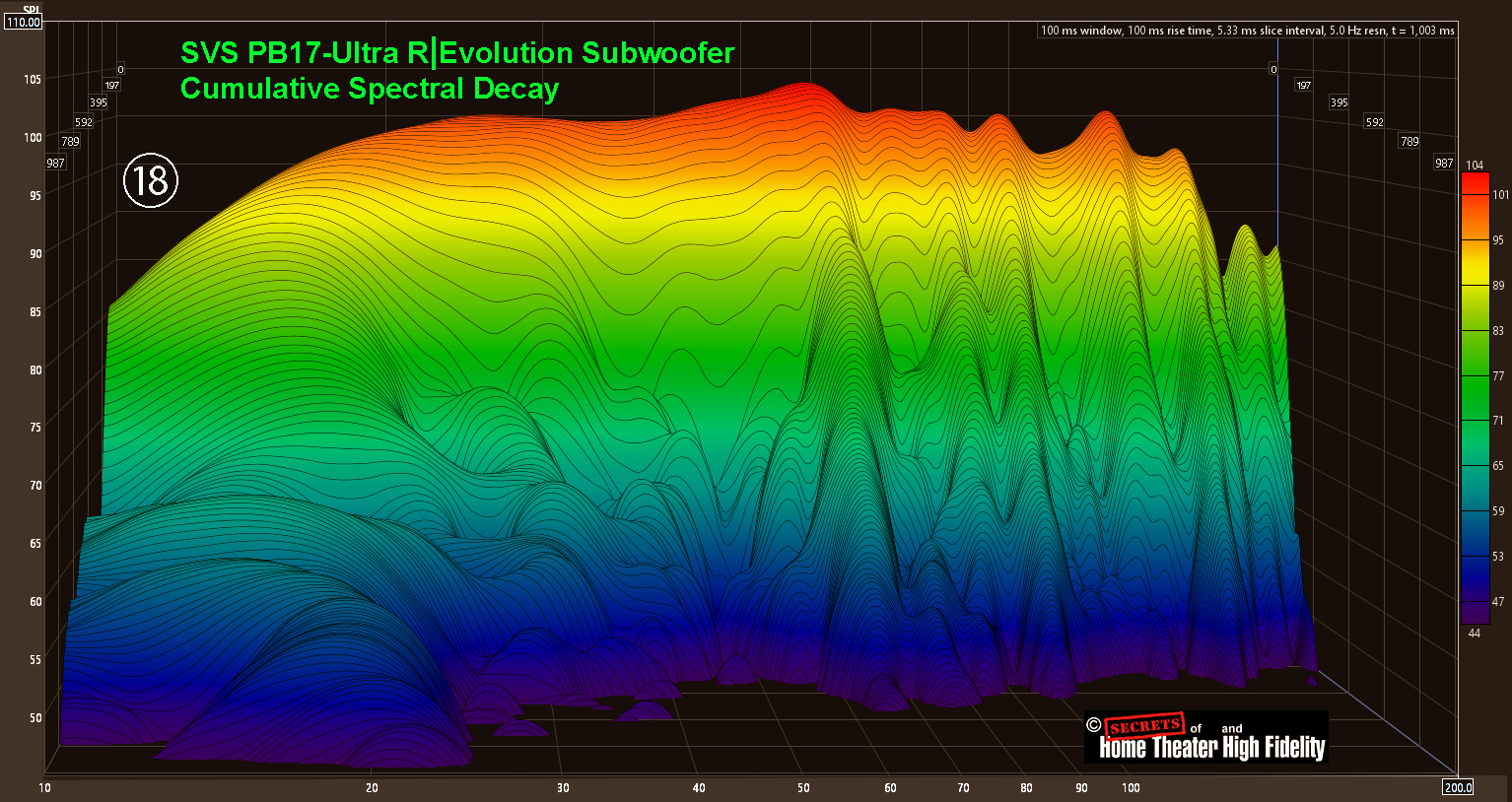 Here are two PEQ band settings that I used (with one port plug). You choose the Frequency, the amount of Boost (or attenuation), and the Q (the higher the Q, the narrower the band). There are six available PEQ bands in the latest version of the phone app.
Here are two PEQ band settings that I used (with one port plug). You choose the Frequency, the amount of Boost (or attenuation), and the Q (the higher the Q, the narrower the band). There are six available PEQ bands in the latest version of the phone app.
22 Mbps wireless air data rate
Sample Rate:
48 kHz
THD+N:
-70 dB (10 Hz – 20 kHz)
S/N:
+105 dB (10 Hz – 20 kHz)
Cross-talk:
>75 dB @1 KHz
Frequency Response:
6 Hz – 20 kHz +/- 0.5 dB
Audio Latency:
< 19 ms
Transmission Range:
130’ (line of sight)
Analog input level:
maximum 2 V rms
Minimum power:
5 V @ 0.5 A
Analog output level:
maximum 1 Vrms
Minimum power requirement:
4.75 V @ 0.3 A
Deters against against both in and out-of-band sources of interference, including microwaves, wireless cameras, cordless phones, Bluetooth devices, and more
Operates seamlessly alongside 802.11b/g/n Wi-Fi
Automatic receiver antenna diversity minimizes fading and multi-path effects
Seamless RF band/channel switching
RF Band – Tri-Band (auto switching) (2.4/5.2/5.8 GHz) – finds the best solution and connects three RF frequency ranges for each frequency band
Band 1: 2400-2483.5 MHz
Band 2: 5150-5250 MHz
Band 3: 5725-5875 MHz
Dimensions:
W 3.15″ (80 mm) x D 2.36″ (60 mm) x H 1.02 (26 mm)
Weight:
1.25 lbs
MSRP:
$199.99
The Tri-Band Adapter is designed to let you connect the subwoofer output from your processor to the Audio In of the transmitter unit, and the output of the Audio Out of the receiver unit to the input on your subwoofer. It has a 1 Volt output maximum, so you need to carefully set the volume control on the subwoofer when setting it up.
Two 5 Volt wall wart power supplies come with the set, plus some cables.
It seemed to work fine with my processor, and I also bench-tested it with the transmitter connected to my sound card output on my computer, and the receiver connected to the sound card input with a 20-foot cable so that the receiver could be placed across the room. There was one wall between the transmitter and receiver as well.
Here is the Frequency Response (Figure 1). It is within 0.5 dBV from 10 Hz to 20 kHz. The response rolls off sharply above 20 kHz.
The Distortion curve (Figure 2 below) shows less than 0.1%. So, this product could also be used with wireless speakers that have built-in power amplifiers for the entire audio spectrum. In the curve, 2nd-ordered distortion is represented by the yellow line, 3rd-ordered distortion by the red line, and 4th-ordered distortion by the blue line.
IM, measured with 60 Hz and 7 kHz input signals, was 0.034% at 1 Volt output (Figure 3). The noise floor is very low.
Figure 4 shows the same spectrum as in Figure 23, but with an expanded X axis. There is a moderate number of side peaks.
Figure 5 is also an IM test but with 19 kHz and 20 kHz sine waves. Total IMD was 0.046%.
And, in Figure 6, the same data as in Figure 5, but with an expanded X axis. Everything in moderation as the saying goes.
Overall, good results with this modestly priced adapter. It is a stereo product, so you can control two separate subwoofers independently if you like.
 “Raw power!” (P.S. from JJ: I wish I had that much hair.)
“Raw power!” (P.S. from JJ: I wish I had that much hair.)
The new SVS PB17-Ultra R|Evolution Subwoofer is a monster. It will handle anything your surround sound processor can send to it. The only limitations are the foundations of your home. At $2,999.99, it is one of the best subwoofers on the planet.
P.S. – I received some questions about how the PB17-Ultra compares to the PB16-Ultra, and I have addressed that issue in a subsequent project.
- Massive raw power
- Frequency response down to 15 Hz
- Excellent EQ and other flexible options available from the phone app
- Metal grille option like with the PB16-Ultra


